Istanbul is one of the most popular city destinations in Europe, welcoming tourists from all corners of the Earth. And for good reason! This city boasts incredible history, gorgeous architecture, and amazing food. If you’ve decided to head to Istanbul for a long weekend and are unsure how to get started planning your trip, we are here to help with this 3 day Istanbul itinerary.
We recently spent around two months in Istanbul, and we really got to know the ins and outs of this city. While we aren’t as knowledgeable as a born-and-bred local, we explored the city pretty extensively during our time here, which makes for some solid recommendations.
So, have you got 3 days to spend in Istanbul and want to make the most of it? Here is our ultimate Istanbul itinerary for 3 days. Plus, we’ll go over some of our top tips and advice for traveling and visiting Istanbul.
Disclaimer: This blog post includes affiliate links, which means we receive a tiny commission – at no extra cost to you. Don’t worry; this doesn’t affect our recommendations whatsoever. It just helps us keep the lights on.
3-Day Istanbul Itinerary
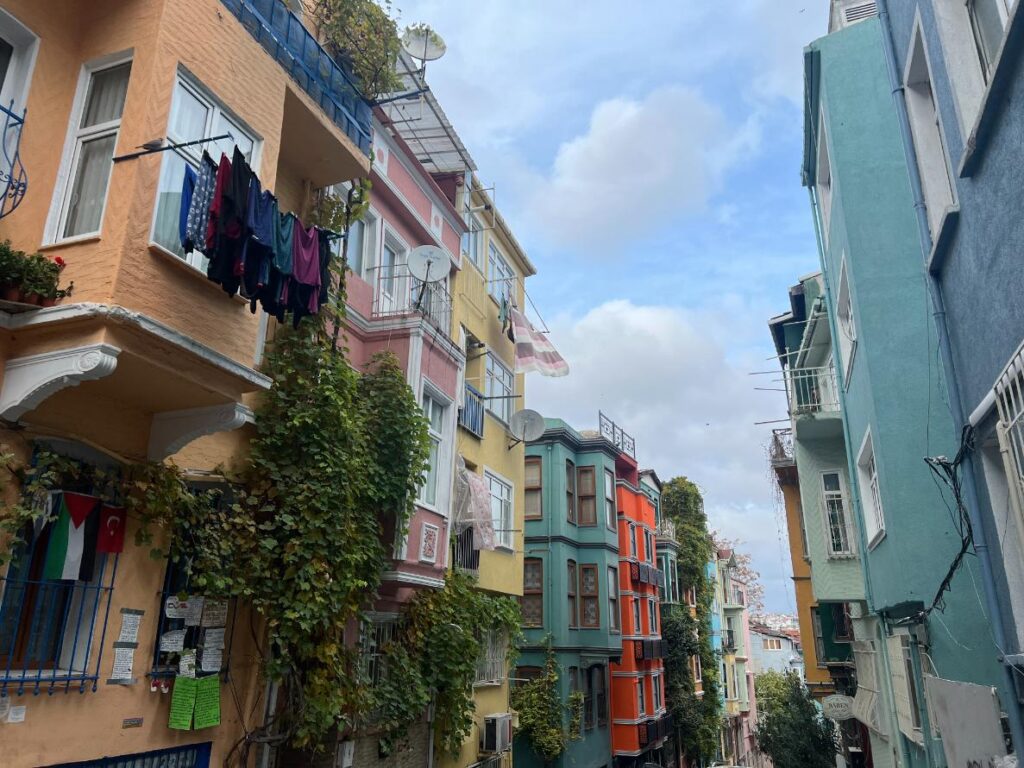
Istanbul is truly a city of layers. Long before it became a modern Turkish metropolis, it served as the capital of the Ottoman and Byzantine Empires. In fact, the city’s roots stretch even further back to a Greek settlement founded in the 6th century BC.
Additionally, Istanbul is the world’s only major city that is situated on two continents: Asia and Europe. With a 3-day itinerary in Istanbul, you’ll only really scratch the surface, but you’ll definitely be able to see the main sights.
Day 1: Old City (Sultanahmet)
Until the rapid urbanization and expansion of the city in the 20th century, Istanbul was confined to a small peninsula. This Peninsula is where you’ll find the oldest historic sights in the city. The old city is located in the Fatih district of Istanbul, and is a great place to start exploring when you first arrive.
Sultanahmet has been the beating heart of Istanbul for centuries, while it’s definitely the most touristy area of the city, you simply cannot miss it.
If you are staying nearby, you can walk to Sultanahmet; otherwise, you can take a tram or metro from Beyoğlu.
Here are some of the best things to see in your self-guided tour of Istanbul’s old city.
Hagia Sofia
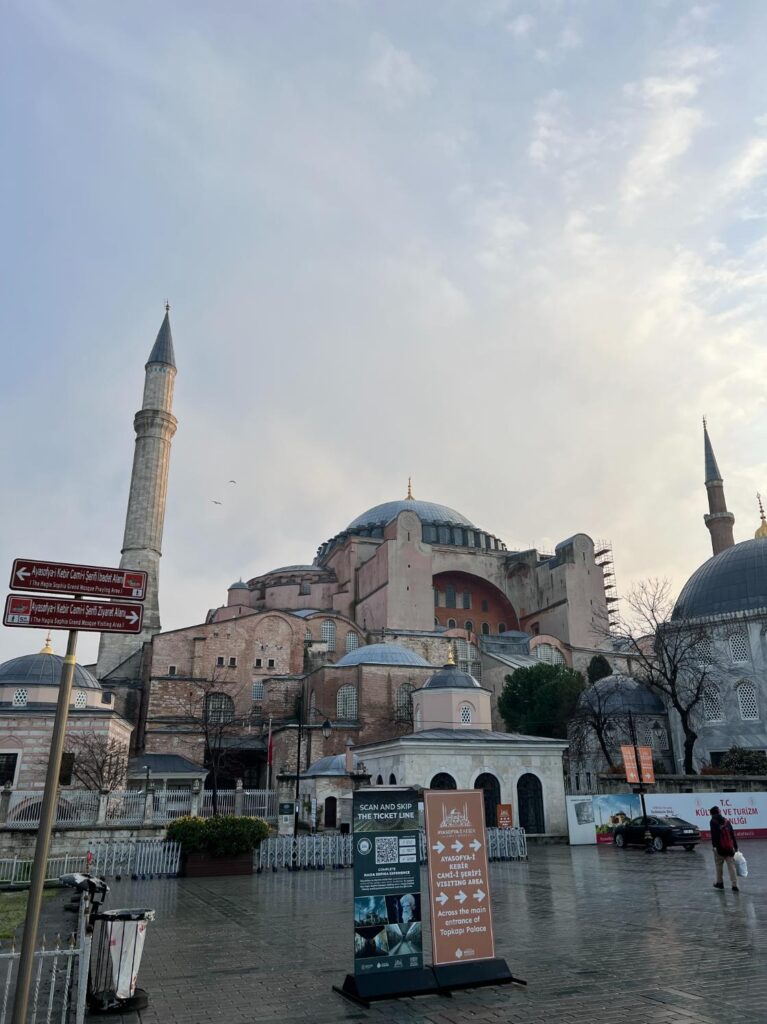
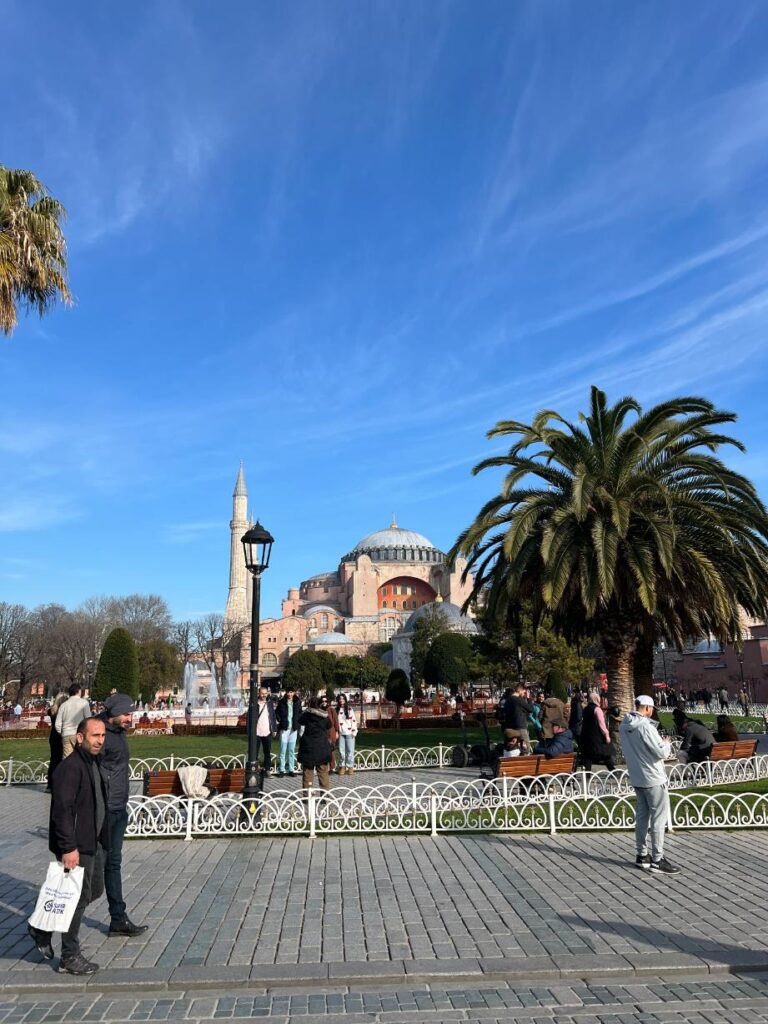
One of the oldest and largest churches in the world, Hagia Sofia is an architectural marvel and one of the most famous buildings in the world, let alone in Türkiye. The church was initially built as a Byzantine cathedral in the 6th century and was converted into a mosque by the Ottomans in 1453. Hagia Sophia is a symbol of the many changes Istanbul has undergone over the centuries. Inside, you’ll see massive Islamic calligraphy panels and Ottoman-era plasterwork. However, if you look closely, you’ll also spot fragments of the original Byzantine mosaics, some dating back to the 9th century.
Hagia Sophia was free to enter until 2024. But, unfortunately, now you’ll need to pay 25 euros for a ticket (we will discuss prices in Istanbul later on). That said, as one of the most ancient and impressive churches in the world, it’s certainly still worth it.
Top tip: As you might expect, the line to get into Hagia Sophia can be brutal, so make sure to get to the church early!
Blue Mosque
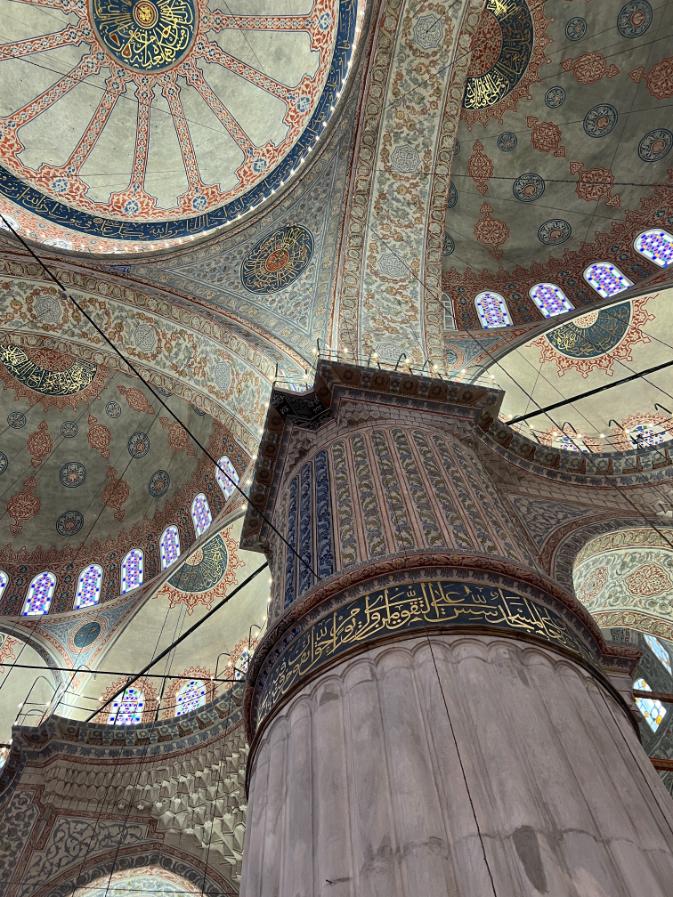
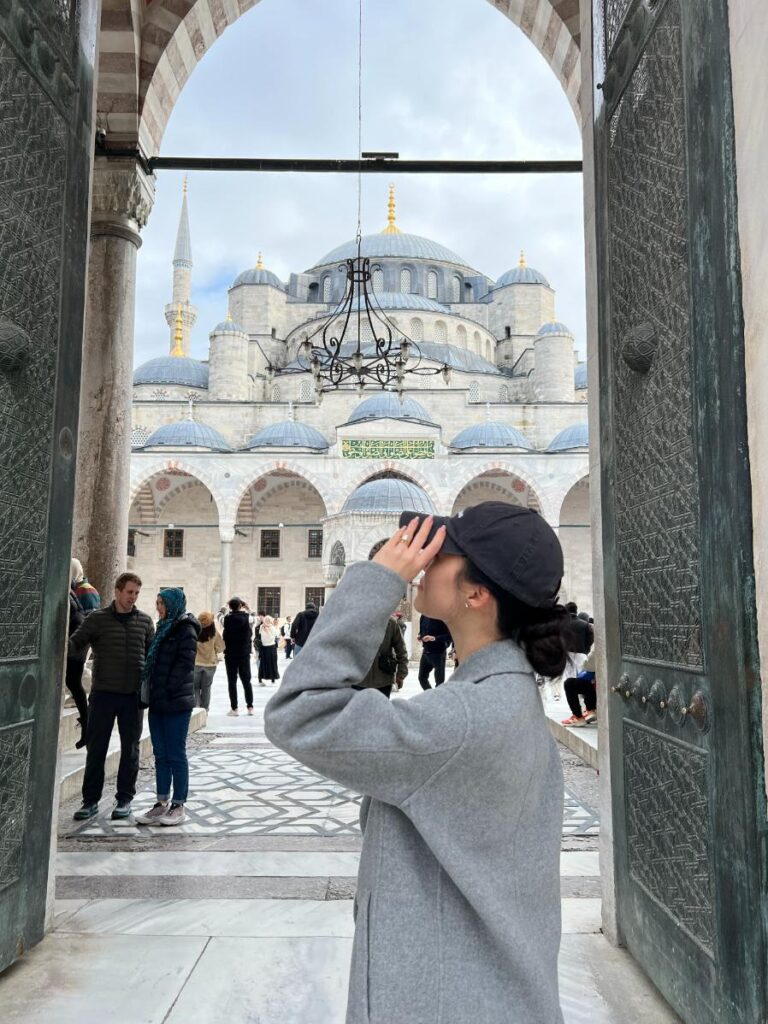
In our opinion, the Blue Mosque is one of the most beautiful buildings in Istanbul. The interior is covered in intricate Islamic artwork and stained-glass windows. The Blue Mosque, also known as the Sultanahmet mosque, was built by Ottoman Sultan Ahmed I in the 17th century. This mosque is located directly opposite the Hagia Sophia in an attempt to rival the Byzantine-era cathedral.
Better yet? The Blue Mosque is free to enter! That said, the mosque closes throughout the day during prayer times, so make sure you plan your visit accordingly.
Basilica Cistern
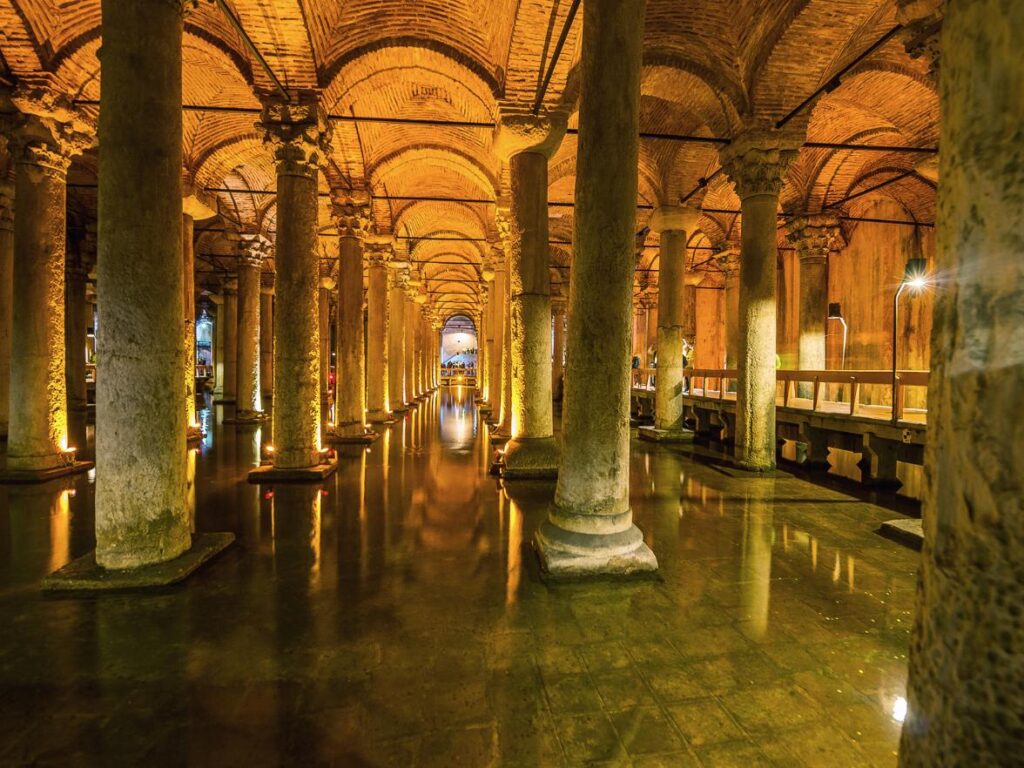
Next, you’ll explore another impressive Byzantine ruin in Istanbul, but this time, we are heading underground! There are more than 700 underground cisterns in Istanbul, but the Basilica Cistern is the largest. The underground structure was designed for storing water and can hold up to 80,000 cubic meters (approximately 32 Olympic-sized swimming pools). The massive cistern was built in the 6th century, around the same time as the Hagia Sofia by Justinian I.
The Basilica Cistern is one of the most unique archaeological sites in the city and is extremely well preserved.
Tickets to this site cost around 30 euros.
Lunch: Pide

You’ve probably worked up an appetite after exploring the Old City all morning. For your first lunch in Istanbul, we recommend trying pide, which is essentially Turkish pizza. Our favorite pide spot in the old city is Pak Pide Pizza Salonu. The restaurant may not look like much on the outside, but trust us when we say it’s worth the trip!
This is an affordable, no-frills pide restaurant that serves fresh and delicious food. It’s a small place with a few simple tables and a wood fire oven where the two owners are constantly churning out orders. Considering its proximity to the main tourist area, the price point of this restaurant is also impossible to beat.
Spice Bazaar
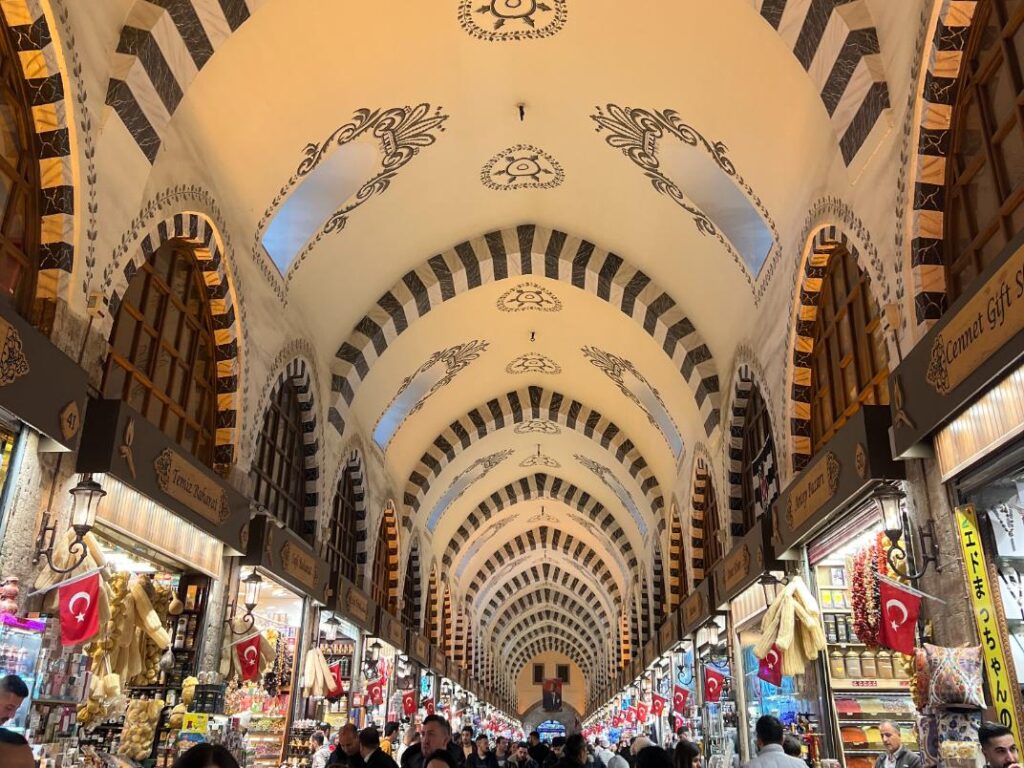
The Spice Bazaar is a feast for the senses and is absolutely worth a visit. This is a great place to visit for the atmosphere and, of course, the smells! The building itself dates back to the 17th century and was the historic center of Istanbul’s spice trade. Today, the domed hallways are packed with colorful stalls selling spices, dried fruits, teas, Turkish delights, and other souvenirs.
That said, we don’t actually recommend buying spices or sweets here. Most of the products are geared toward tourists, meaning the quality tends to be lower and the prices much higher than what locals pay elsewhere. If you are looking for some authentic Turkish sweets and spices to bring home with you, we recommend buying them from the Kadıköy market on the Asian side of Istanbul. More on this on day 3!
Grand Bazaar
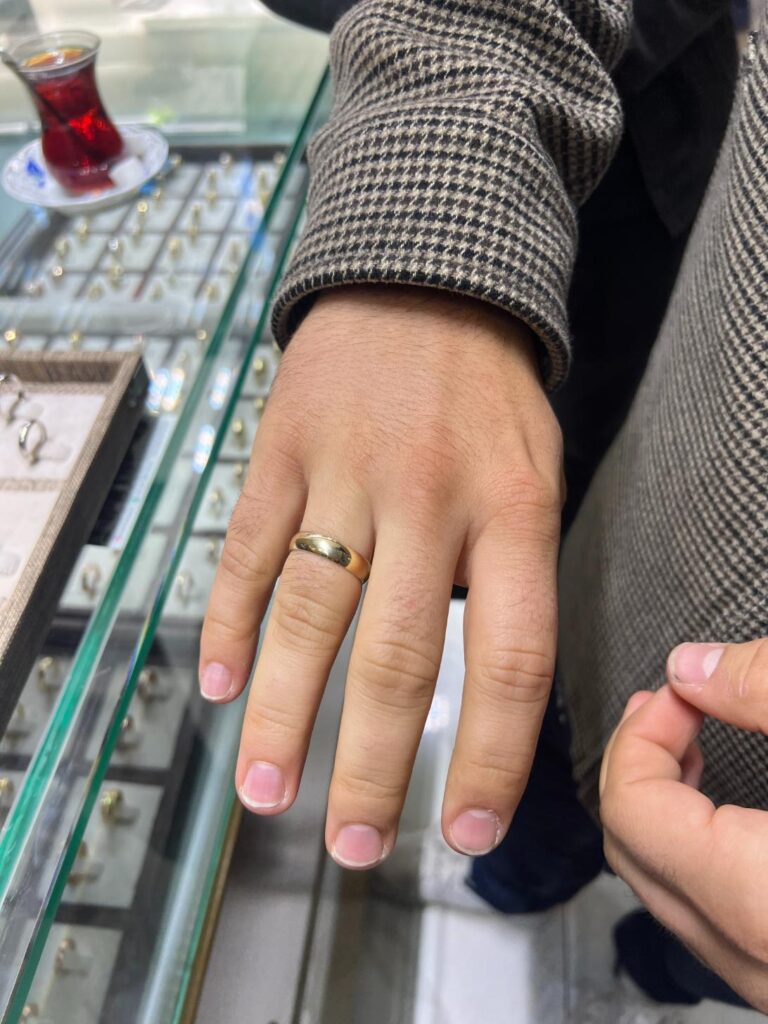
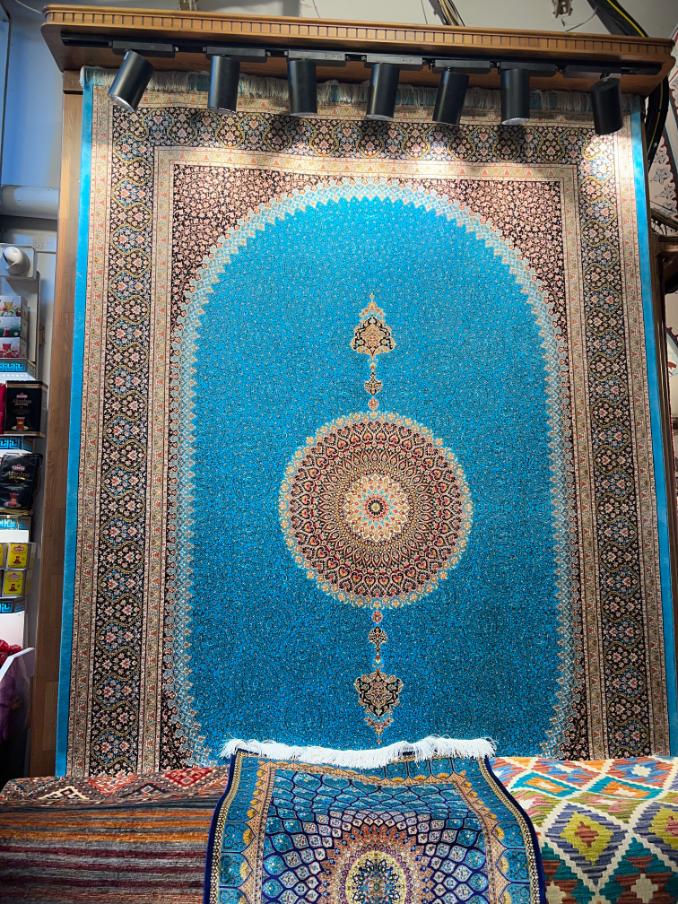
One of the largest and oldest covered markets in the world, the Grand Bazaar dates back to the 15th century. It’s practically a small city of its own, with over 4,000 shops spread across an area of 30,700 square meters (330,452 square feet).
Here, you’ll find endless rows of gold jewelry, carpets, textiles, leather goods, ceramics, and other souvenirs. However, unlike the Spice Bazaar, you actually can find some really high-quality items here. Buying something from the Grand Bazaar is like a rite of passage in Türkiye and is bound to be a fun experience.
The vendors in the Grand Bazaar have a lot of energy and can be VERY convincing. Keep in mind that haggling is absolutely expected, and if you don’t negotiate hard, you will almost certainly overpay. Don’t be afraid to walk away if a deal doesn’t feel right. After all, there’s always another shop just around the corner.
Our personal tip? Bring a Turkish-speaking friend with you if possible!
We actually bought our wedding rings in the Grand Bazaar. Thanks to a Turkish friend who helped us negotiate, we secured a significantly better price than we would have managed on our own. (And for what it’s worth, the price of gold jewelry here is often far more affordable than in many other countries.)
Even if you’re just browsing, the Grand Bazaar is an experience. The ancient labyrinth of shops is overwhelming in the best way possible!
Turkish Hamam Experience

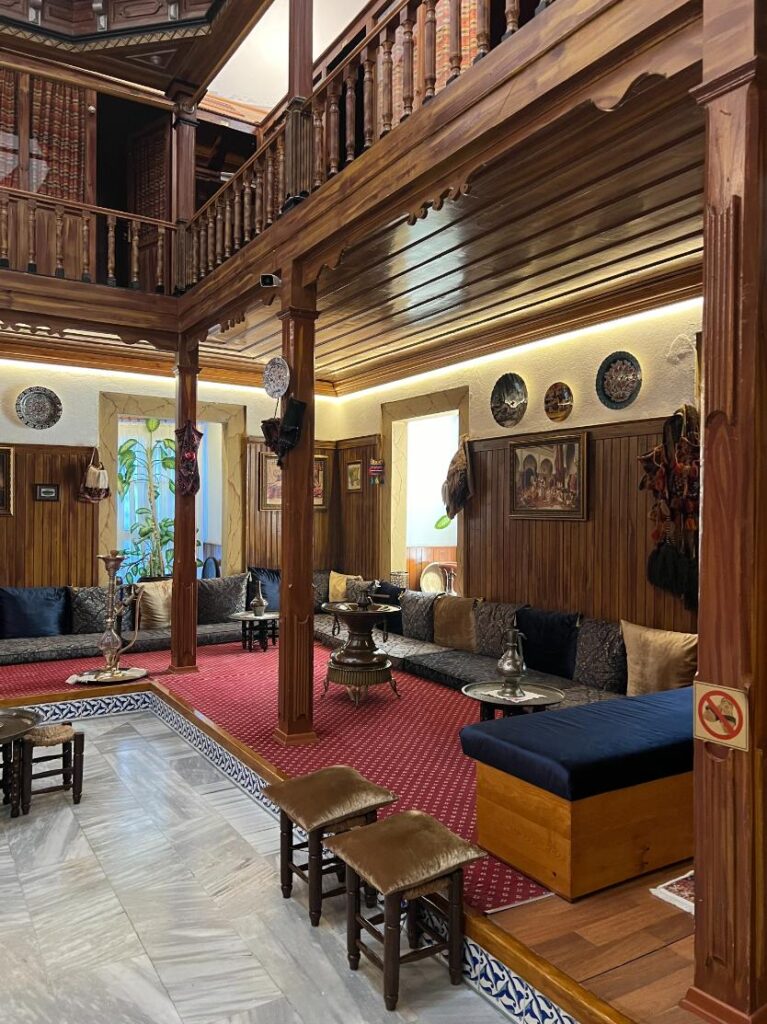
No trip to Istanbul without a trip to a traditional hamam—essentially a Turkish spa. Hamams have been around for hundreds, if not thousands of years, and are a staple of Turkish culture. Cleanliness is highly emphasized in Islam, so hamams have been a prevalent part of life in Istanbul since the rise of the Ottomans, especially among the elite.
We chose to visit the Süleymaniye Hamam, which was founded in 1565 by Suleiman the Magnificent. Süleymaniye is your only option if you are looking for a couple’s hamam in Istanbul, which is why we chose it!
Most hamams in the city separate genders, but this one allows couples to experience the ritual together.
Our visit started with a long, steamy rest in the heated marble sauna room, followed by the main event: a full-body scrub and exfoliation by an attendant. This was complete with mountains of foam and a massage that somehow felt both relaxing and like a wrestling match. The experience was strange, soothing, and unforgettable.
Looking for more destinations to visit with your significant other? Check out our list of the best travel destinations for couples.
Most hamams in Istanbul are in ancient historic buildings. In fact, some that were used by Ottoman sultans are still in use!
Hamams range drastically in cost. You can find exclusive, luxury experiences that cost hundreds of dollars, as well as budget-friendly local spots.
Here are some of our other top recommendations for hamams to visit in Istanbul:
- Kilicali Pasa Hamam: An architectural gem near the Karaköy waterfront, this beautifully restored hamam was originally built for Ottoman navy men.
- Cagaloglu Hamam: This is one of the oldest and most iconic hamams in the city. Cağaloğlu is more than 300 years old and has hosted everyone from Florence Nightingale to Kaiser Wilhelm. The ornate interiors of Cağaloğlu are jaw-dropping, and the place has a seriously luxurious vibe.
Day 2: Beyoğlu
Sultanahmet is the most popular area of Istanbul for tourists, but there is so much more of the city worth exploring! Directly across the “Golden Horn” is Beyoğlu, which is actually where we spent most of our time when we lived in Istanbul. Beyoğlu is more modern and liberal than the old city. While it may have fewer historic buildings, it has its own charm.
Turkish Breakfast in Cihangir
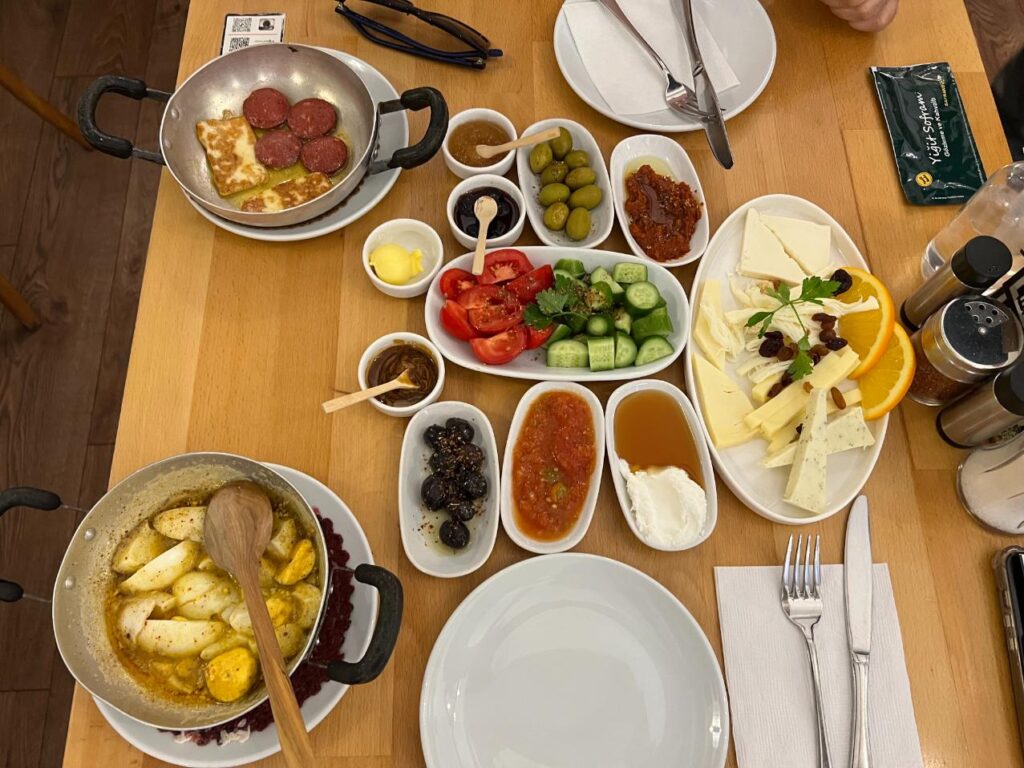
Your first stop of the day will be our absolute favorite neighborhood in Istanbul. Cihangir is a hip neighborhood located on a hill between Taksim and Galata. This is a super popular area for tourists, expats, and alternative Istanbulites. Here, you’ll find winding colorful streets, charming boutique shops, and plenty of cafes, bars, and restaurants. It’s a bit more relaxed than some of the other areas of the city and has a completely different vibe than the historic tourist center.
While we definitely recommend taking some time to walk around and explore, your main reason for visiting Cihangir should be to have a Turkish breakfast at one of the many delicious cafes in the neighborhood.
If you’ve never tried Turkish breakfast before, you are in for a treat! Turkish breakfast, or kahvalti, has got to be the most top-tier breakfast we have ever had. A traditional kahvalti consists of various breads, cheeses, jams, spreads, vegetables, and fruits. You’ll also generally be able to choose an egg or meat dish. We highly recommend mememen, which is Turkey’s superior answer to scrambled eggs, similar to a shakshuka.
However, the shining star of every Turkish breakfast is the tea. Turkish çay is strong, dark, and served in tiny tulip-shaped glasses that just keep coming.
Here are a few of our favorite breakfast spots in Cihangir:
- Kahve 6: Our go-to spot, Kahve 6 has a mix of traditional Turkish dishes and international brunch dishes. The mememen here is the best we’ve tried anywhere in Turkey!
- Yiğit Sofram Gözleme ve Kahvaltı: A no-frills, high-reward local favorite. This is another top-notch breakfast place. The restaurant’s full Turkish breakfast is fresh and delicious. Come prepared to share; their serving sizes are enormous.
- Kaktüs Cihangir: A cozy café that leans more toward the trendy side. The food at Kaktüs is genuinely superb. Expect a blend of classic Turkish kahvaltı and creative brunch cuisine.
Taksim Square + Istiklal Street
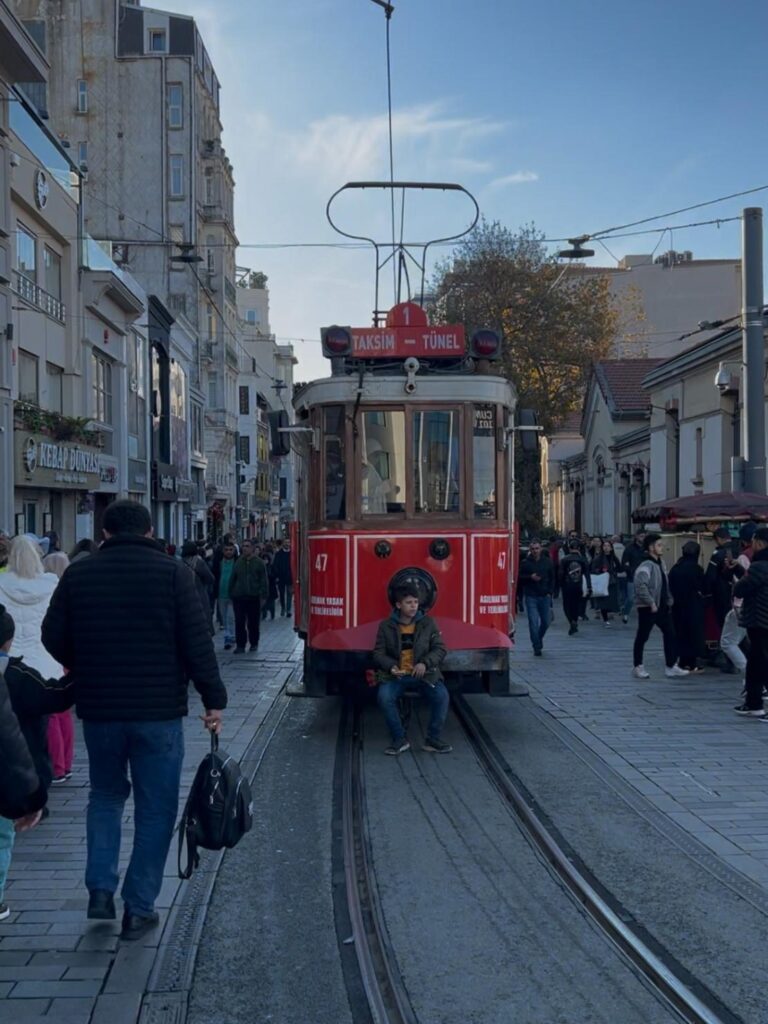
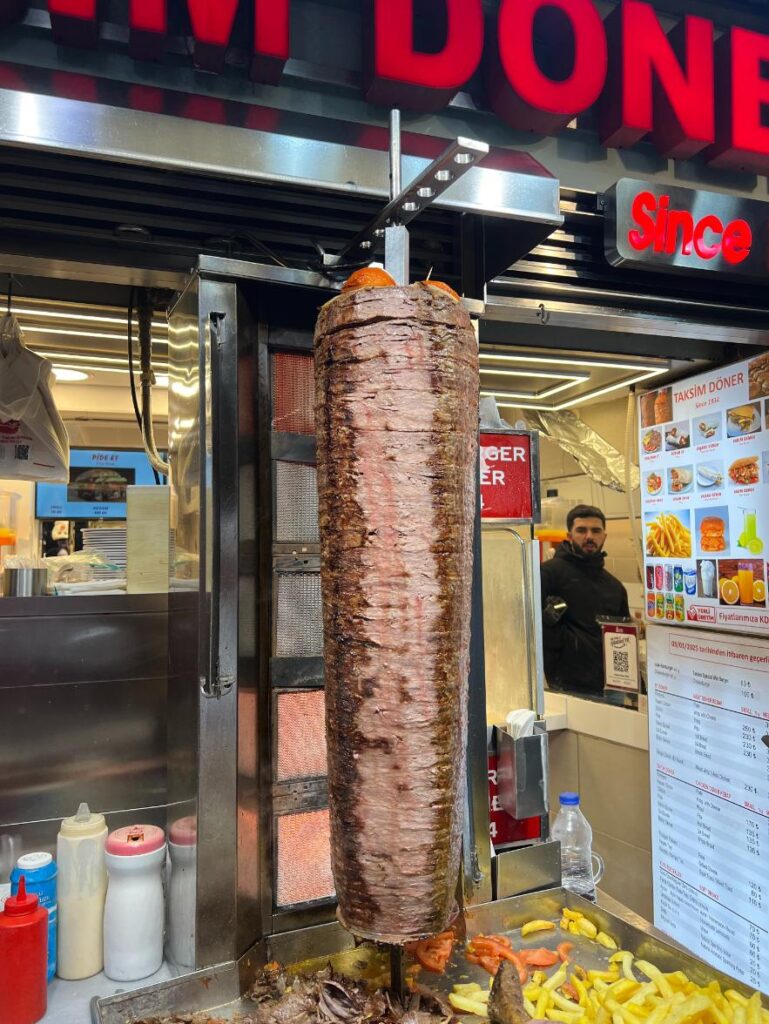
After having a delicious breakfast, it’s time to explore Istanbul’s more modern city. The heart of Beyoğlu is Taksim Square. Here you’ll find countless shops, restaurants, and street food vendors. From the square, head down Istiklal Street, which is one of the busiest pedestrian streets in Istanbul. This area is not nearly as historically significant as Sultanahmet, but it is a really cool side of the city to see. Instead of the countless mosques and bazaars that you’d find in the old city, you’ll find bars, cafes, modern clothing shops, and even fast food restaurants. Taksim is also one of the biggest nightlife areas in Istanbul, and it is where most of the larger nightclubs are located.
On Istiklal Street, you’ll also find the iconic red tram, so if you are tired of walking, you can hop on one of these old-school trams and ride towards Karaköy.
Galata Tower
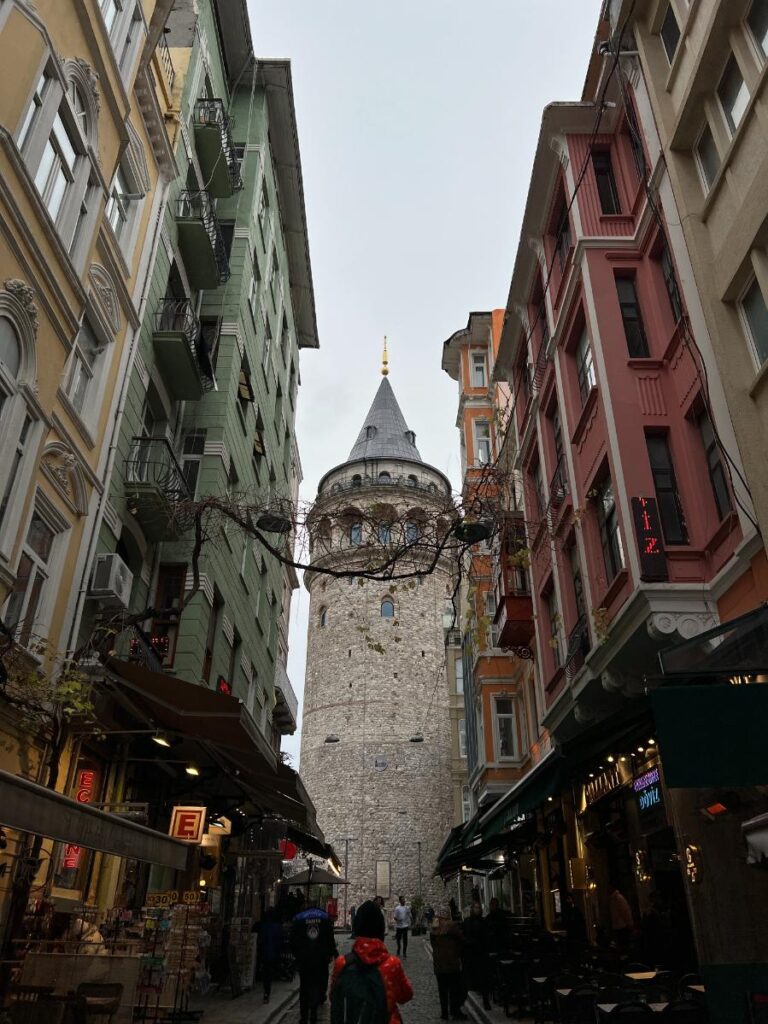

At the end of Istiklal Street, you’ll reach the oldest area of Beyoğlu: Karaköy. This area was founded by the Byzantines, and during Ottoman rule, it was heavily influenced by Genoese and Venetian merchants. You’ll notice a stark shift in architectural style here, as many of the buildings were built in European styles.
The largest building in Karaköy is Galata Tower, which was built in 1348 by Genoese merchants. The building literally towers over the surrounding area and provides one of the best views in the city.
In 2020, the Turkish government restored the Galata Tower and transformed it into a museum.
Due to the high price tag for entering the tower (50 euros), we decided not to go inside, but we have heard that the view from the observation deck is pretty impressive!
You can also simply opt to walk around the cobblestone streets in the area or stop for a coffee and enjoy the views from one of the many cafes lining Büyük Hendek Street.
Lunch in Karaköy
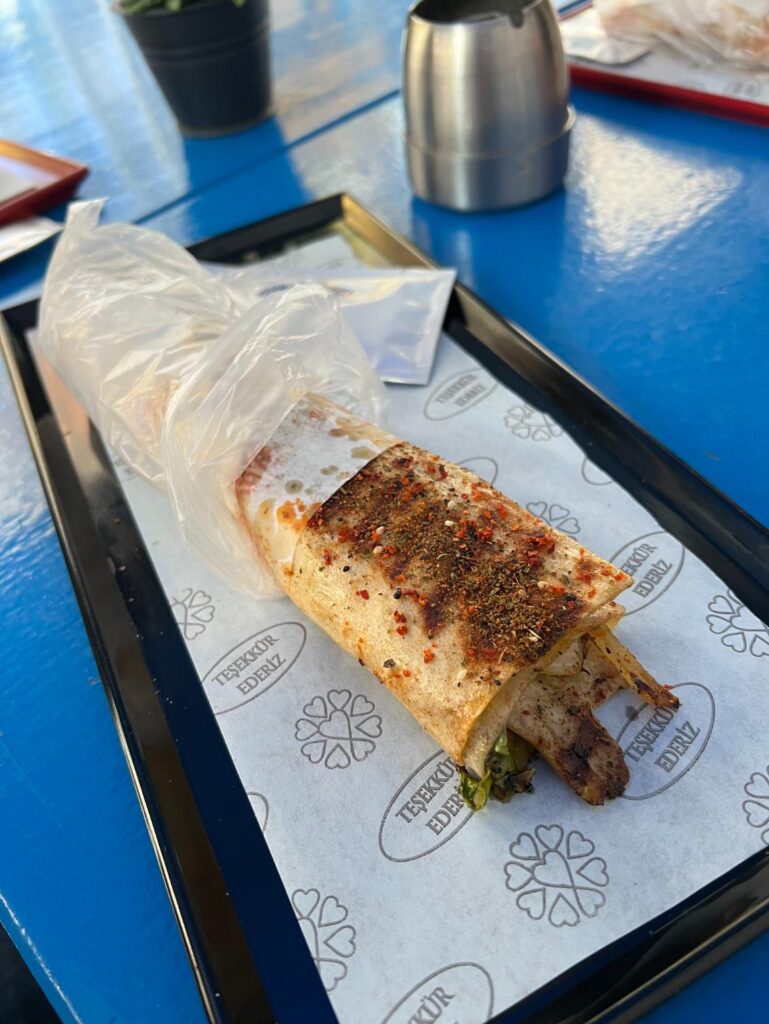
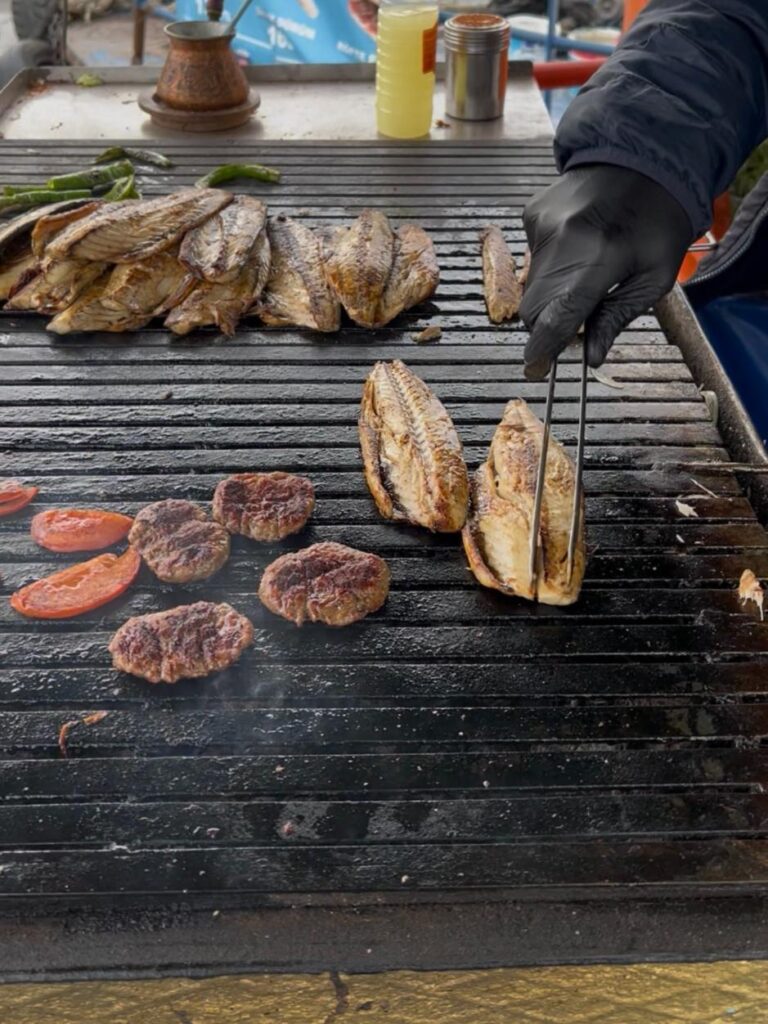
Next, you’ll head down the hill towards the shores of the Bosphorus Strait. Karaköy is one of the most famous neighborhoods in Istanbul and the perfect place to stop for lunch. This colorful neighborhood is one of our favorite areas of the city, packed full of restaurants, bars, and cafes.
The most famous thing to eat in Karaköy is a fish wrap, called balik dürüm. This is a piece of sea bass with some vegetables and spices. It’s a simple meal, but super fresh and delicious. Honestly, we would rank this as our favorite “street” food in Türkiye. There are tons of small restaurants that sell balik dürüm in Karaköy, and you really can’t go wrong. Just choose a place that smells good and seems popular with locals!
Topkapi Palace
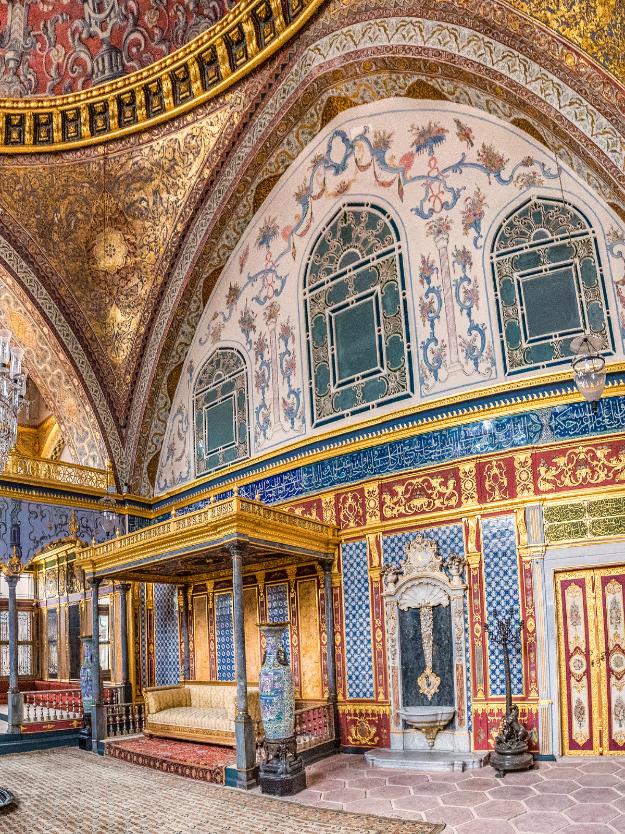
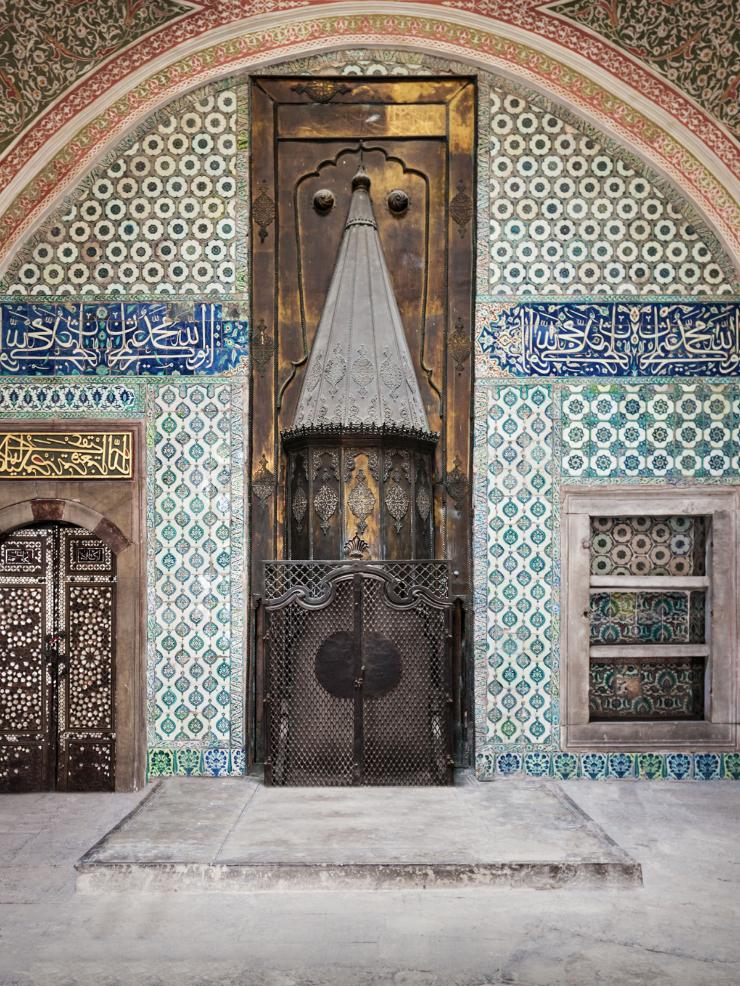
After scarfing down a much-deserved lunch, it’s time to cross the Galata Bridge and head to Topkapi Palace, which was the primary residence of the Ottomans. Today, this massive museum houses galleries and artifacts from throughout the city’s long history.
The palace was built in 1460, just 7 years after the fall of Constantinople. The entire complex is covered in intricate architecture and Islamic artwork. Inside the museum, you’ll find some of the Prophet Mohammed’s personal belongings, including his cloak, swords, and even a hair from his beard.
Entry to Topkapi Palace is definitely on the more expensive side, with tickets costing more than 50 euros. That said, if you are going to splurge on one major attraction in Istanbul, this should be the one.
As with other attractions in the city, we highly recommend booking your ticket to Topkapi Palace before your visit.
Traditional Meyhane Dinner

Turkish food is absolutely delicious, and the cuisine has so much variety. The best place to sample a bunch of different Turkish dishes is at a traditional meyhane. A meyhane is a restaurant that serves raki, a traditional Turkish liquor made from distilled grapes and anise.
Raki has an acquired taste and certainly isn’t the drink of choice for everyone, but you’ve got to try it at least once during your trip to Istanbul! At a meyhane, you’ll pair raki with a variety of different cold mezzes such as babaganoush, dolmas, cheeses, humus, marinated seabass, and much more.
You also order hot meat dishes like kofta, shrimp, and grilled fish. We ate at a meyhane once a week for our entire 2-month stay in Istanbul. That’s how good it is!
Here are a couple of our favorite meyhanes in the city:
- Müşterek Meyhane: This was our go-to spot. It’s a no-frills restaurant that is super popular with locals (make sure to make a reservation!). The food was always top-notch, and the prices are significantly lower than other meyhanes in the area.
- Vişneli Meyhane: Another one of our favorites. Vişneli is a bit more upscale than Müşterek, but its prices are only slightly higher.
Have a Couple of Drinks
Did you know that Beyoğlu is one of the main nightlife centers of Istanbul? If you’re craving a few more drinks after a bottle of raki, you’re in luck, as there are plenty of fun places to have a few extra drinks after spending a couple of hours at a meyhane.
Here are just a few notable bars we recommend from our stay in Istanbul:
- KumSaati Blues Club: A smaller bar that is great for live music
- Ziba: A very cool local bar
- James Joyce Irish Pub: The Irish bar you want to go to to play some darts
- MiniMuzikhol: Feeling like clubbing? Head here.
🛑 WAIT! Don’t forget insurance!
SafetyWing’s Nomad Insurance is a travel medical insurance for nomads by nomads. You can sign up for as little as $2 a day to cover your travel and medical needs while on the go ✈️🌏
Day 3: Asian Side of Istanbul
After spending a couple of days exploring the European side of Istanbul, it’s time to switch continents—literally! But don’t worry, you won’t have to travel far, the Asian side of Istanbul is just a 30-minute ferry away.
When we come back to Istanbul, we will likely stay in Kadıköy on the Asian side. The area is much less touristy, but there is a lot going on, and it is much more affordable. While most of the main tourist attractions in Istanbul are located in Sultanahmet and Beyoğlu, the Asian side of Istanbul is definitely worth visiting. You won’t find ancient mosques or cisterns here, but you will find excellent food, vibrant street life, and a creative energy that’s hard to resist.
Take a Ferry to Kadıköy

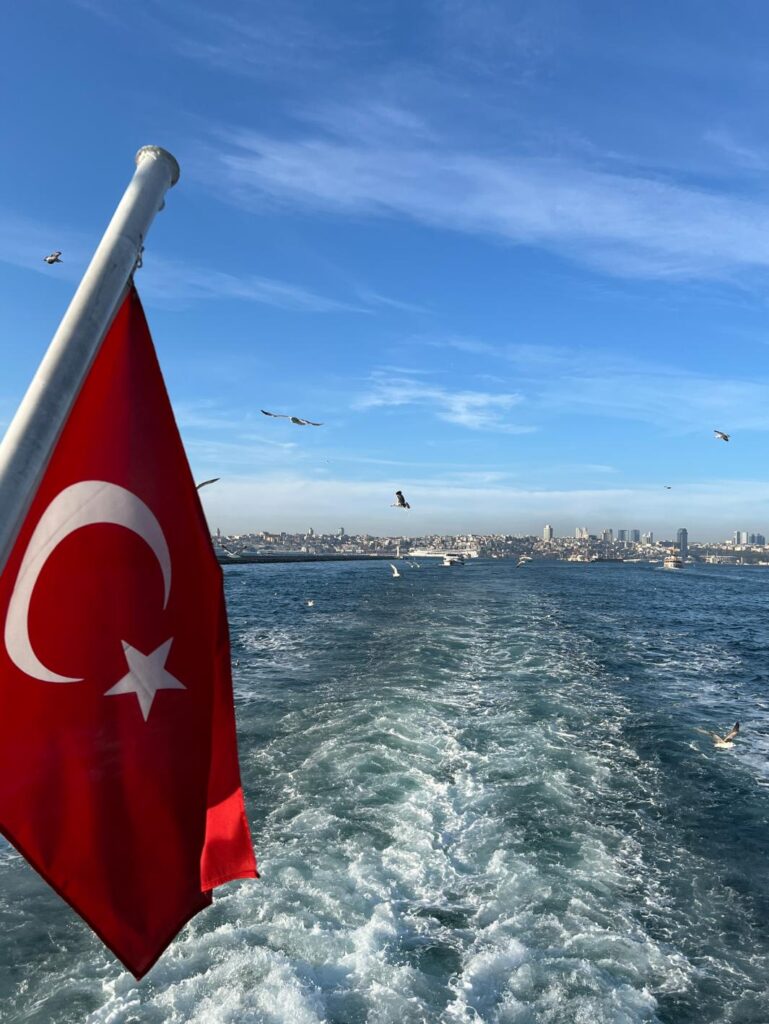
You can easily take a public ferry to Kadıköy from essentially any main ferry terminal in Istanbul. If you are staying in Beyoğlu, you can take a ferry from Karaköy or Kabataş. If you are in Sultanahmet, head to Eminönü. Ferries run frequently, and you can use your IstanbulKart to board.
The ferry ride itself is a tourist attraction. Grab a seat on the upper deck, order a tea from the on-board café, and enjoy panoramic views of the skyline as seagulls follow you across the strait. You’ll cross the Bosphorus Strait and get unmatched views of Istanbul’s cityscape. You’ll even see Hagia Sophia and Topkapi Palace from the water.
And then, just like that, you’re in Asia!
As soon as you get to Kadıköy, you’ll notice a completely different vibe from the other parts of the city. The neighborhood is much more open-minded and far less touristy than most of the European side of the city.
Eat Your Way Through the Food Market
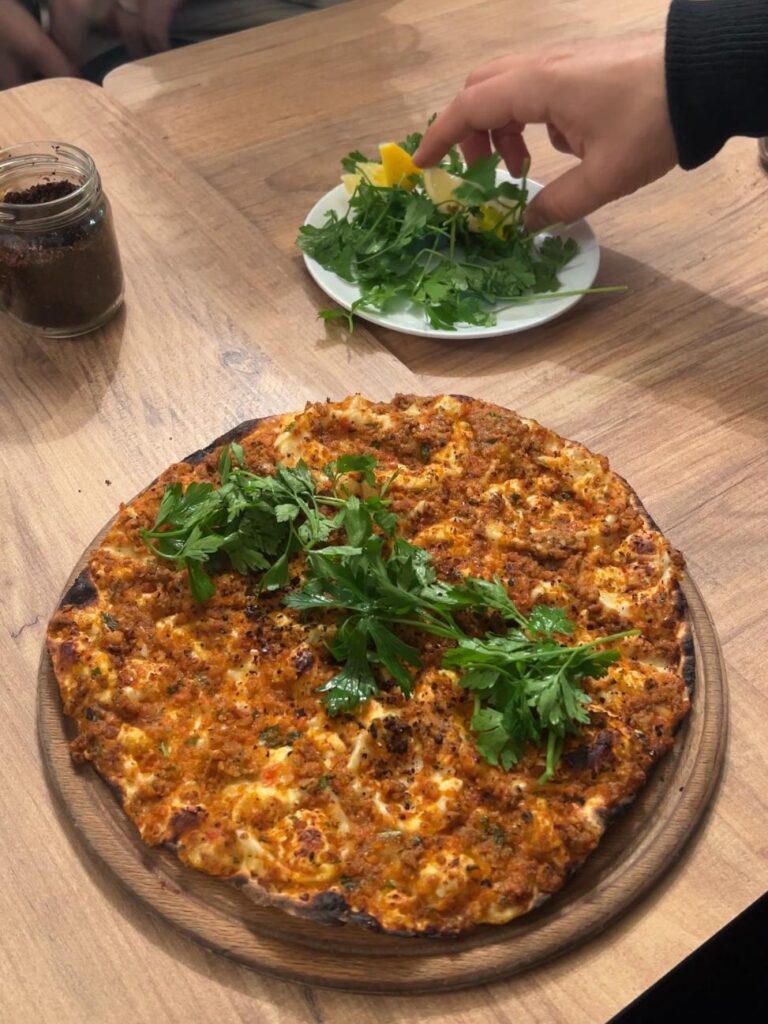
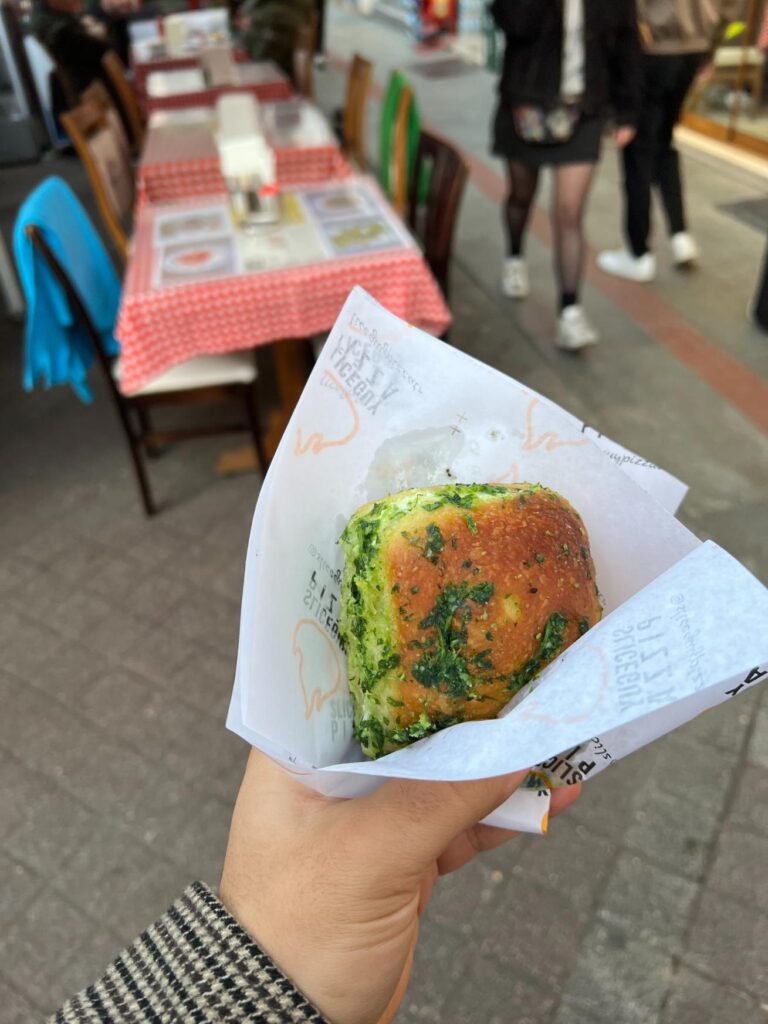
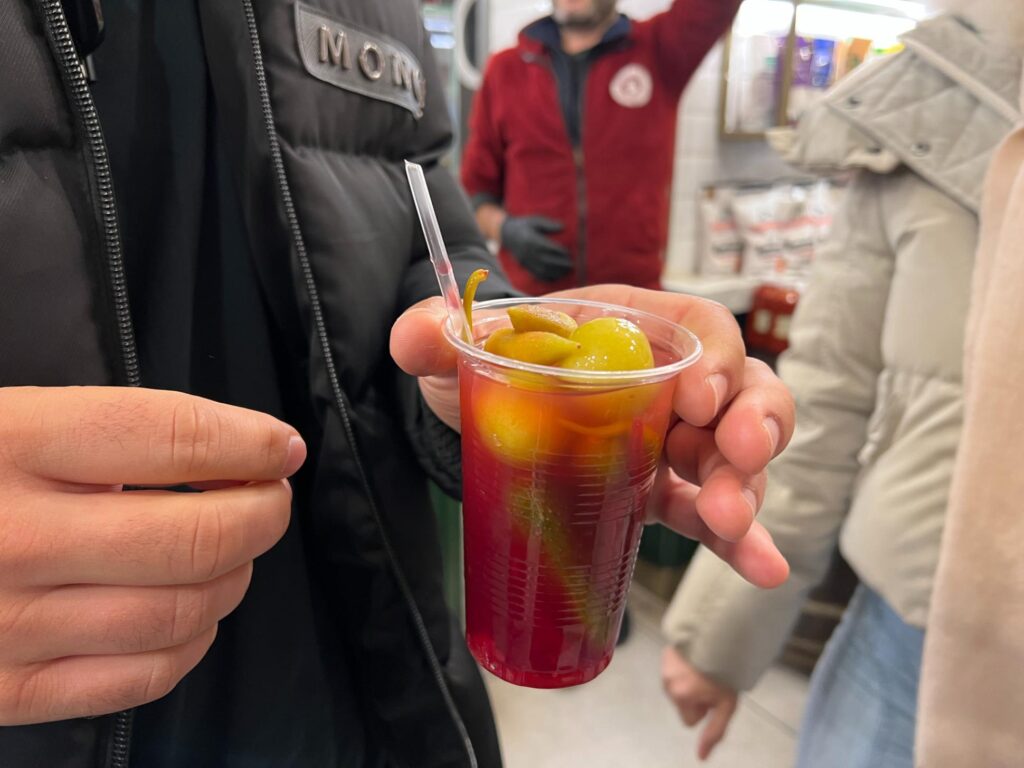
Kadıköy’s markets are completely different from the massive bazaars. The food and vegetable markets here are more geared toward locals, which is a good thing! The compact streets of Kadıköy will overwhelm all of your senses and likely make your mouth water. One of our favorite things to do in the area is to walk through the market and sample different foods.
Here are a few of the top things to try:
- Lahmucun from Halil Lahmucun
- Pickles from Ozcan famous pickle shop
- Turkish delight
- Turkish coffee
- Natural honey at Etabal Arı Ürünleri
Watch the Sunset in Moda
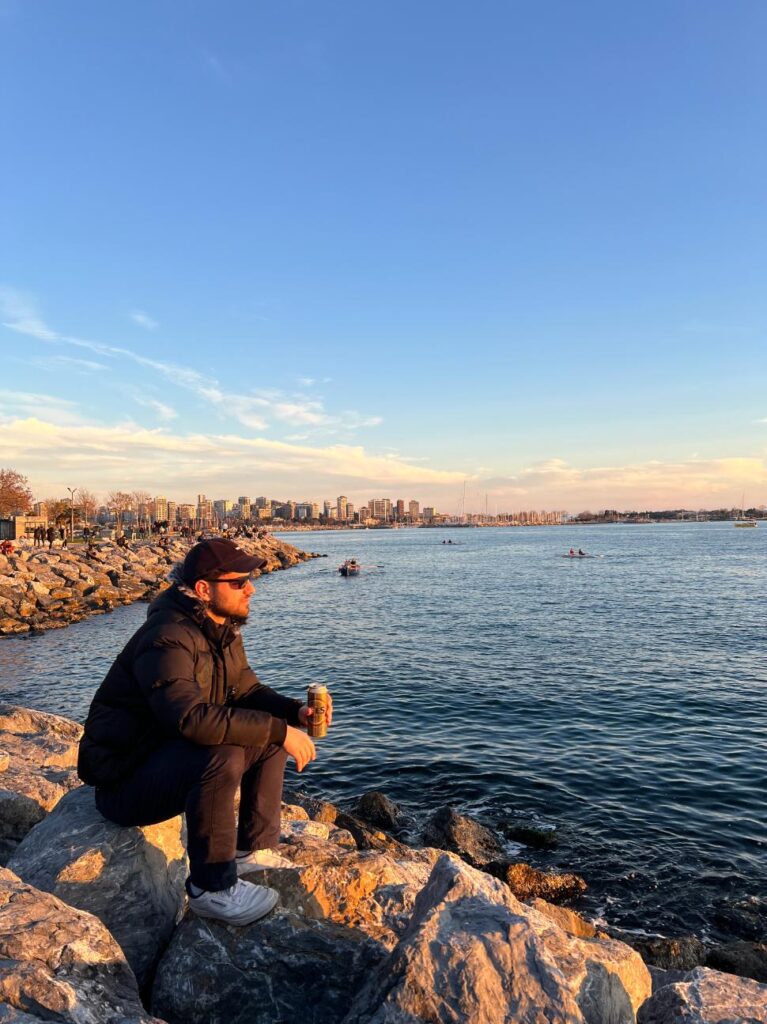
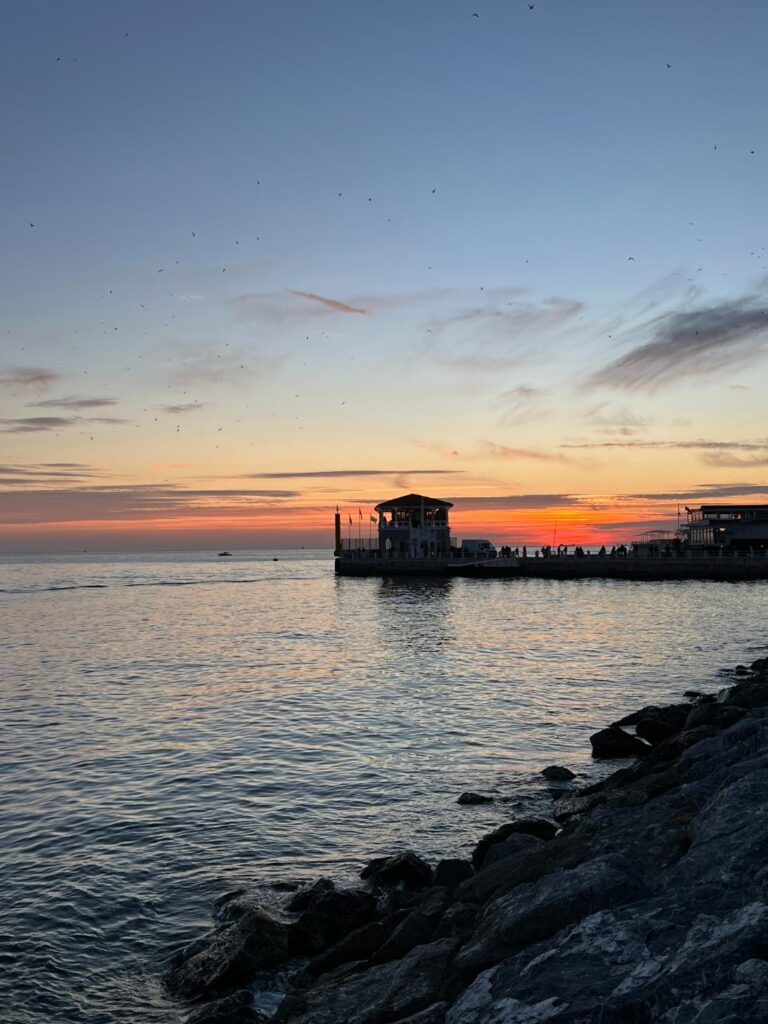
After getting your fill of food in the market, walk over to Moda. Moda is a residential neighborhood within Kadıköy that has a beautiful seaside promenade with great views of the Sea of Marmara. Moda is a great place to relax and have a picnic (maybe try some of the snacks you picked up at the Kadıköy market?).
This is one of the most peaceful places in the city to slow down and people-watch. On a clear day, we highly recommend watching the sunset.
Dinner at Çiya Sofrası
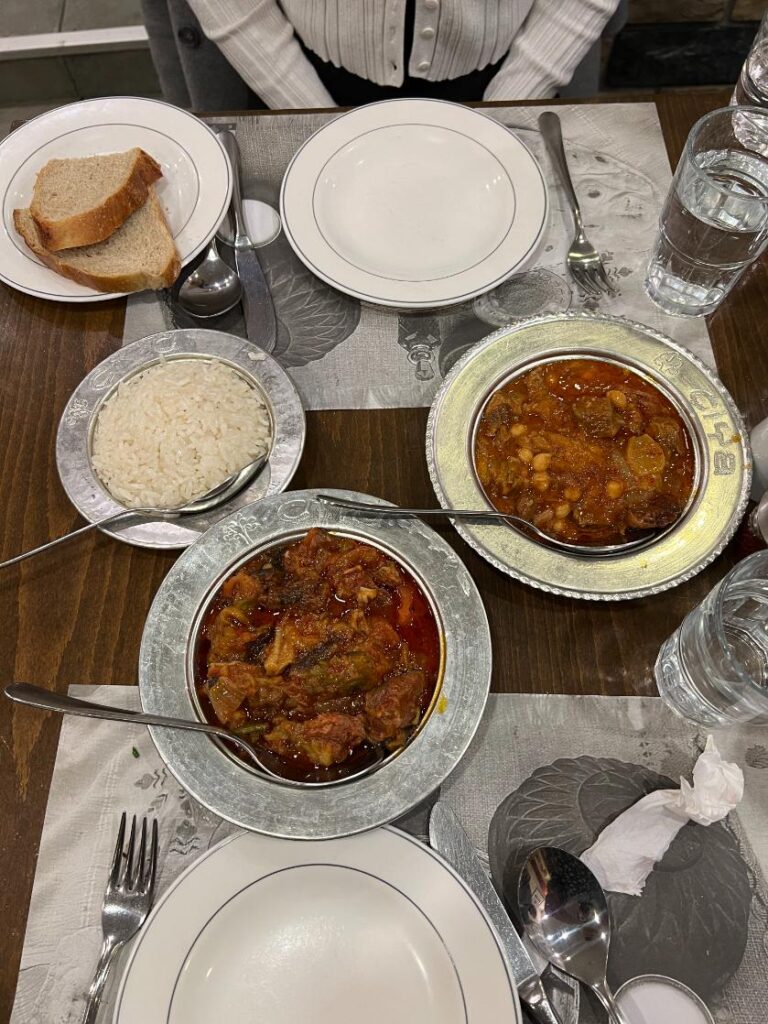
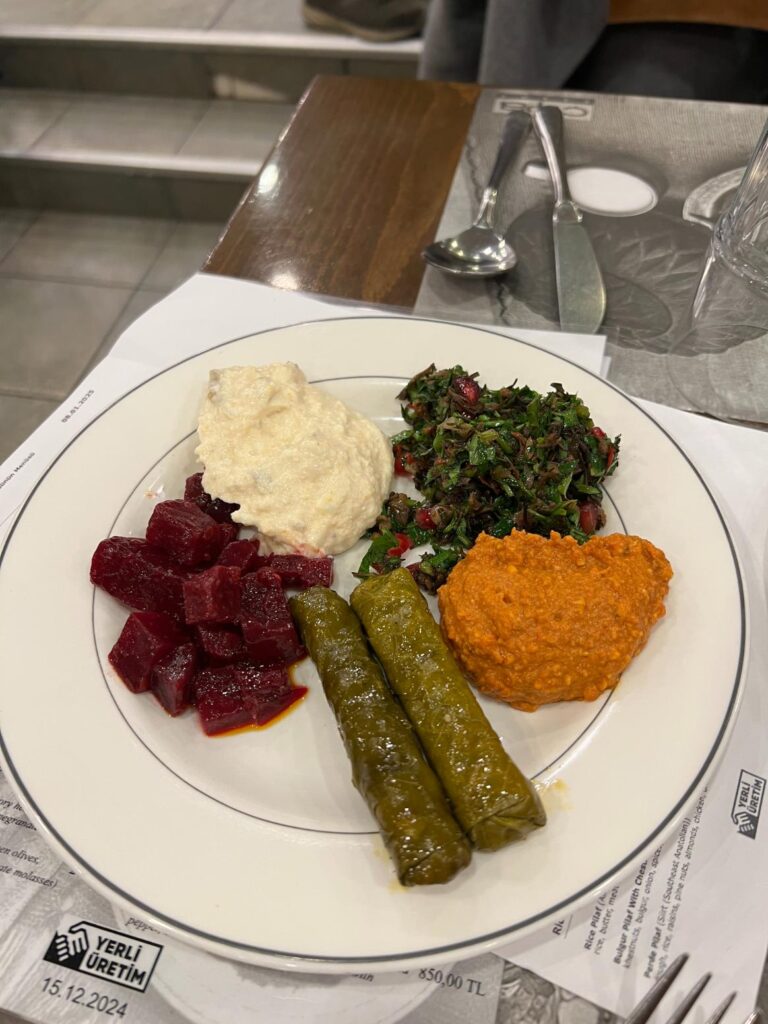
Your final stop in Kadıköy is one of our top restaurants in Istanbul. Çiya Sofrası is a home-style restaurant that serves dishes from all over Türkiye, including lesser-known regional recipes you won’t find on most tourist menus. The restaurant is buffet style, and you can choose from a wide variety of different mezzes and hot dishes. The menu changes daily, and the food is always fresh and super tasty. We especially loved their stuffed vegetables (dolma), lamb stews, and unusual grain-and-herb combinations we’d never tried before. We tried MANY different restaurants in Istanbul, and Çiya Sofrası was a standout.
If you’re feeling up for it, Kadıköy is another great area for a night out. So, walk around and head to any of the bars in the area for a drink (or two).
Try Baklava at Karaköy Güllüoğlu
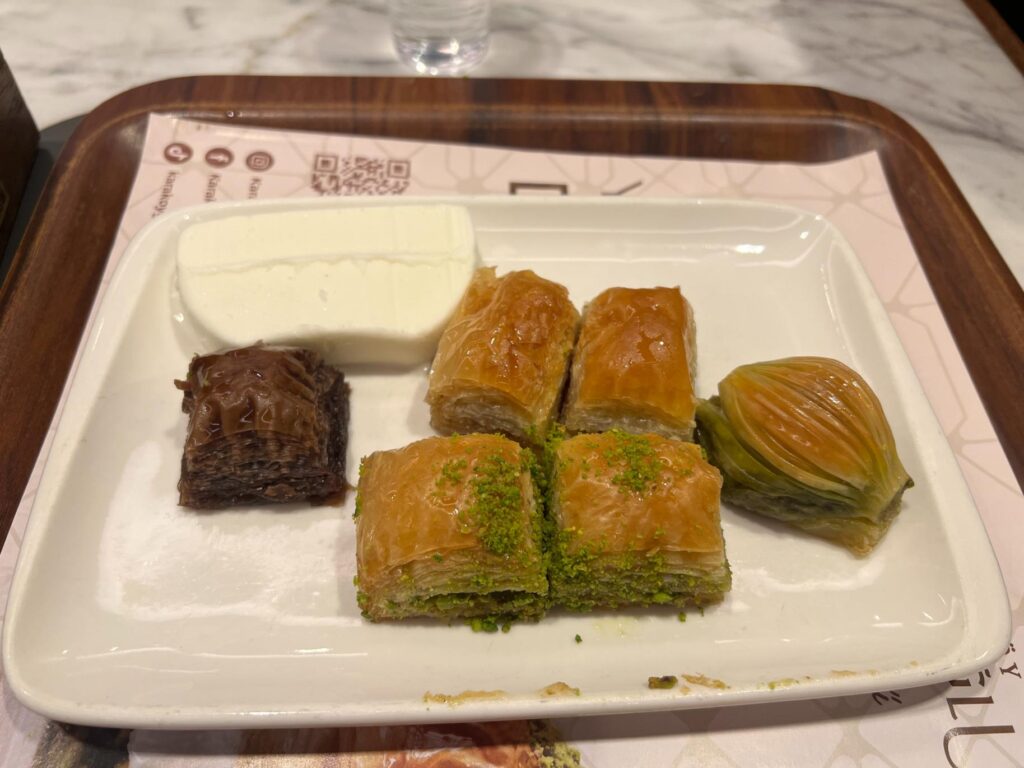
From Kadıköy, take a ferry to Karaköy. If you miss the last ferry, you can take an Uber! But before you head back to your accommodation for some much-needed sleep, you should have one last treat.
What better way to finish off your trip to Istanbul than to sample some of the city’s best baklava? You’ll find this iconic Turkish pastry all over Istanbul, but our favorite spot was undoubtedly Karaköy Güllüoğlu. This baklava shop has been around since 1843 and is a favorite among locals and tourists in Istanbul. They have a variety of different types of baklava to choose from, so come hungry and try a few different types.
Top tip: Ask for ice cream to go along with your baklava. It’s free!
Is 3 Days Enough Time in Istanbul? How Much Time Do You Need?
As Europe’s largest city and one of the most important historical places in the world, you’ll never run out of things to do or see in Istanbul. So, we recommend that you spend an ABSOLUTE minimum of 3 days in Istanbul. Otherwise, you won’t have enough time to properly enjoy the city. That said, you could easily spend much longer than 3 days here.
While the Istanbul itinerary above is extensive, it only scratches the surface of things to do and see in Istanbul. If your schedule allows, 5 to 7 days would give you a much fuller experience of the city.
Have even more time? We spent two whole months in Istanbul and could have easily spent more time here. This is one of the best slow travel destinations in the world, if that’s something you’re interested in!
Other Things to Do in Istanbul If You Have More Time
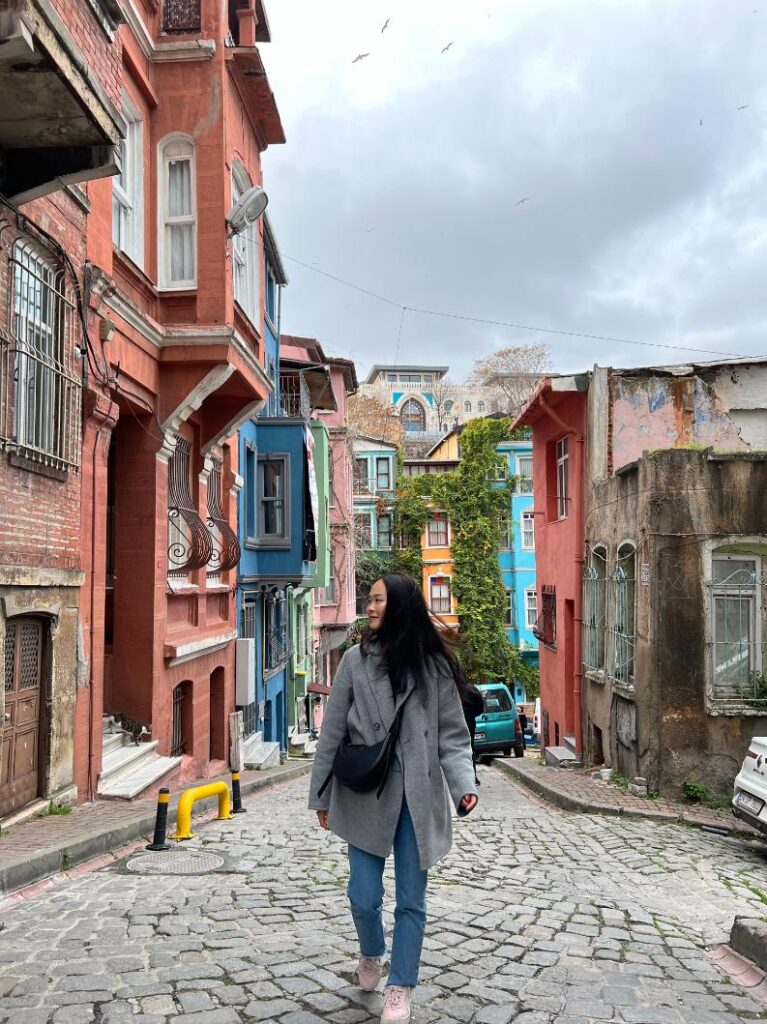
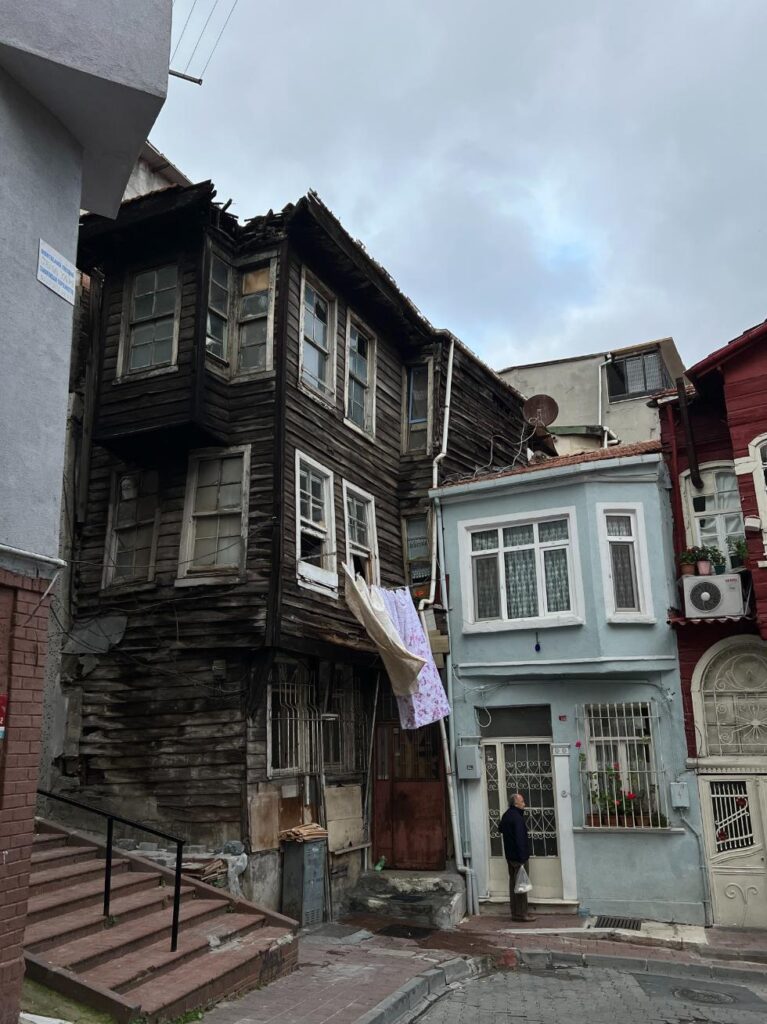
3 days in Istanbul definitely gives you a solid overview, but if you have extra time (and we hope you do!), there’s so much more to do and explore. Here’s where we recommend heading next.
Visit the Prince’s Islands
Just a short 1.5-hour ferry ride from the city, the Prince’s Islands feel like a completely different world from the streets of Istanbul. No cars, no honking, no chaos. Yep – you read that right! Instead, here, you’ll find charming streets, old wooden mansions, and the sweet sound of bike bells and horses trotting down the streets. There are a few different islands to choose from: Büyükada is the biggest and most popular island, but Heybeliada is a little quieter and just as lovely.
Pro tip: Rent a bike when you arrive and bring a swimsuit if you’re visiting in warmer months.
Day Trip to the Black Sea
If you’re craving something completely different from city life, head north to the open air and rugged coastline of the Black Sea. The Black Sea is one of the best day trips from Istanbul and is completely underrated. To get here, you can either rent a car and drive or book a day tour like this one. There are a few different destinations on the Black Sea coast that you can choose from, including:
- Şile: A charming coastal town known for its sandy beaches, dramatic cliffs, and a lighthouse overlooking the sea.
- Ağva: This small riverside town is often visited in conjunction with Şile.
- Anadolu Kavağı: A sleepy fishing village at the northern end of the Bosphorus with a ruined hilltop castle with stunning views of the strait meeting the sea.
Wherever you go, you’ll find plenty of fresh fish to eat by the water and stunning views of the sea.
Explore Balat and Fener Neighborhoods
Looking for colorful streets where you can take plenty of photos for Instagram and have a slower day with no real agenda? Then, head to Balat and Fener, two of the oldest districts of Istanbul. Here, you’ll find crumbling manions, steep staircases, and crooked buildings painted in every color of the rainbow. We stumbled upon these neighborhoods by accident one day. There are tons of cute breakfast places in Balat and Fener, and they are the perfect places to explore if you wanna get a bit off the beaten path.
Visit Chora Church
Another attraction off the beaten path is Chora Church (Kariye Mosque). The church dates back to the 4th century AD and contains some impressive Byzantine mosaics and frescoes inside. You’ll find golden halos and crazy intricate detail that you can admire. You could easily spend a good amount of time slowly walking around, taking in the art and history of the church. As with many of the religious buildings in Istanbul, Chora has since been converted into a mosque.
Head to Dolmabahçe Palace
If Topkapi Palace gives you old-world, sultan-in-slippers vibes, Dolmabahçe brings full 19th-century European grandeur. Here, you’ll find crystal chandeliers, French-style furniture, and elaborate ceilings that’ll have you looking up for the entirety of your stay. This palace has a completely different look from the rest of Istanbul, so it’s worth heading here to explore the grounds and get a visual understanding of how Istanbul has evolved over time.
Transportation in Istanbul
With a population of more than 15 million, Istanbul is a massive city, to say the least. And while certain parts of the city are walkable, you will inevitably need to take public transportation to get from place to place. Luckily, Istanbul has a very efficient and affordable transportation system.
How to Get to Istanbul From the Airport
There are two main airports in Istanbul: SAW, which is located on the Asian side of the city, and IST on the European side. No matter which airport you end up flying into, your best bet is to take a direct bus to Taksim Square. The buses run frequently, and we have flown into both airports several times, never waiting more than 15 minutes for a bus.
If you land in IST, you’ll take the Havaist bus; if you land in SAW, you’ll use Havabus.
Getting Around Istanbul by Public Transportation
We were very impressed by the quality of Istanbul’s public transportation system. It’s easy to use, efficient, and clean. To access the city’s public transport, you’ll need to purchase an IstanbulKart, which you can then use to access trains, trams, ferries, buses, funiculars, and even cable cars in the city.
When we were in Istanbul in early 2025, we paid around 30 Turkish lira per ride for public transportation.
A Word of Warning About Taxis
As is the case in many cities around the world, you should proceed with caution when taking a taxi in Istanbul. Taxi drivers are notorious for taking advantage of wide-eyed tourists, “forgetting” to turn the meter on before proceeding to charge an extortionate rate for a ride.
After a few bad experiences with taxi drivers in the city, we simply opted to walk or take public transportation for the rest of our stay in Istanbul.
Use Uber
If you do decide to take a taxi in Istanbul, we recommend using the Uber app. This way, you’ll know how much the ride will cost before you get in the car. Keep in mind that Uber works a bit differently in Istanbul. So when you book a ride, you are actually simply calling a taxi. The ride is metered, and the app will provide a price range. Just keep an eye on the driver’s meter to make sure it matches the amount you are charged. Taxi drivers often input the maximum amount. But honestly, it was not worth fighting with the taxi drivers about this, so we let it go most of the time. And likely, you will too.
Where to Stay in Istanbul
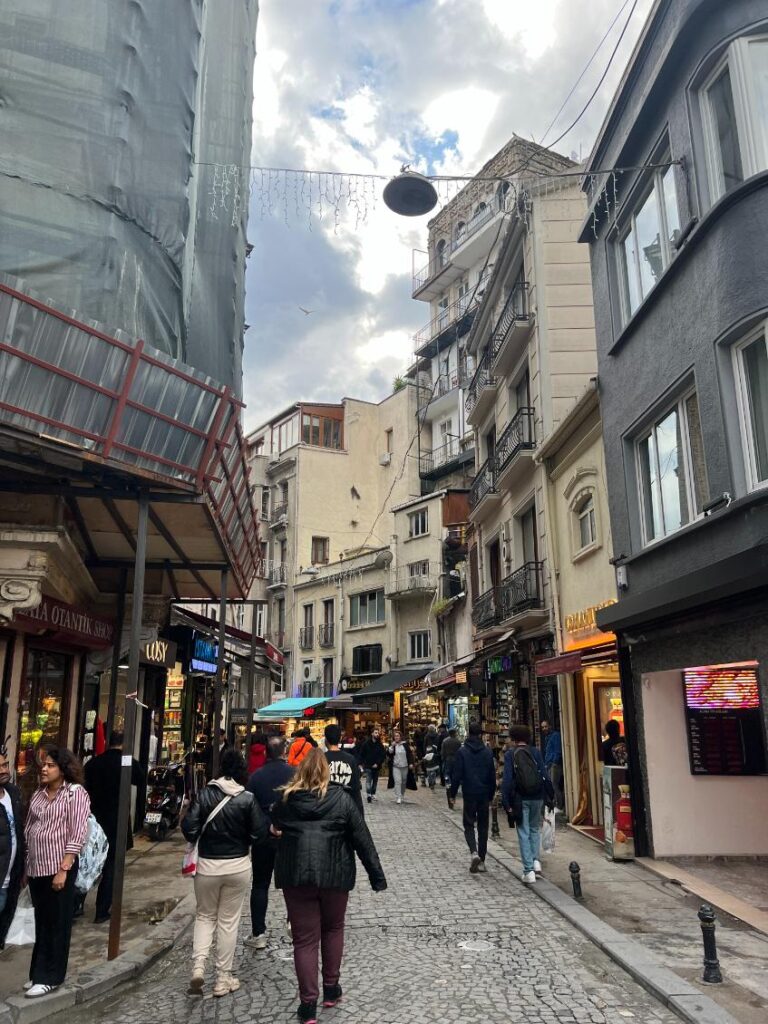
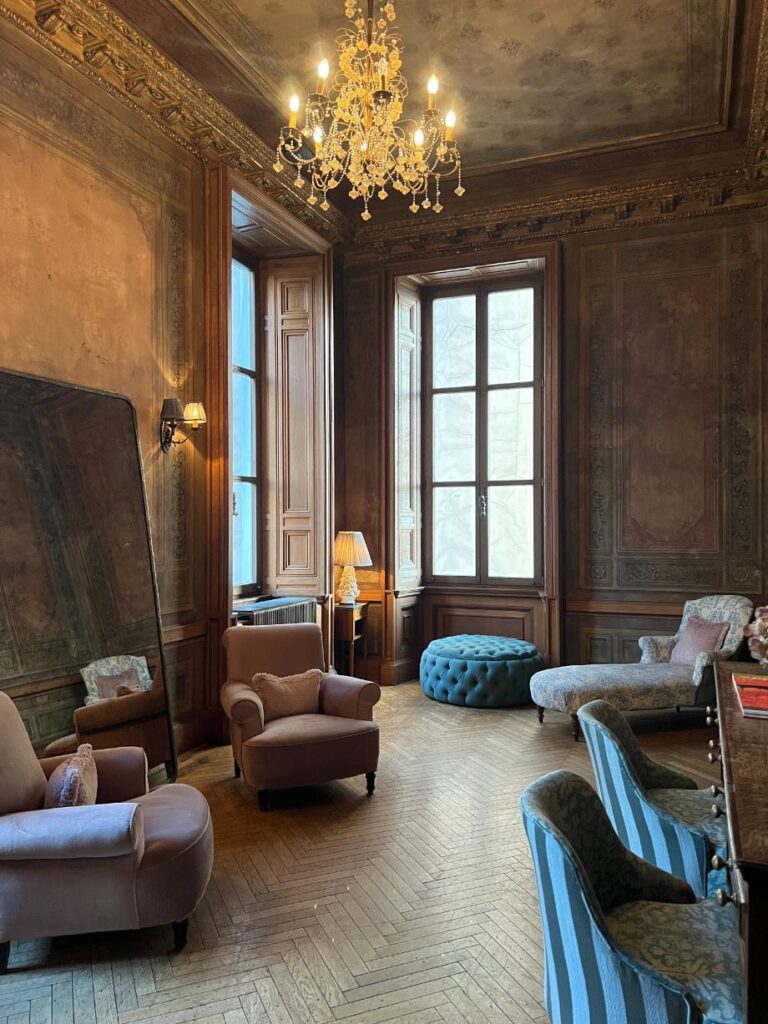
Istanbul is massive, and like most major cities, where you stay will absolutely shape your experience. So, how do you even begin to narrow down where to stay in Istanbul? Well, that’s where we come in. Interestingly, in Istanbul, there is no single “best” area. It all depends on what kind of trip you’re after.
Beyoğlu
If we had to pick a favorite area to stay in Istanbul, it’d be this one. Beyoğlu sits just across the Golden Horn from the Old City and feels like modern Istanbul at its most vibrant. Think independent cafés, artsy backstreets, rooftop bars, and more locals than tourists. It’s where we based ourselves during our 2.5 months in Istanbul, and we wouldn’t have it any other way. This area strikes the perfect balance between charm and convenience. You’ll be close to Galata Tower, Istiklal Street, and the ferry terminals, and there’s always something happening just around the corner. Plus, some of the city’s best nightlife can be found here, too.
Stay here if: You want a more local vibe, easy ferry access, and don’t mind a bit of late-night energy.
Here are some recommendations for where to stay:
- Archeo Hostel – Budget Option
- Witt Istanbul Suites – Mid-Budget Option
- Soho House Istanbul – Luxury Option
Sultanahmet
The classic tourist area to stay in Istanbul is Sultanahmet. Here, you’ll find Istanbul’s most iconic sights (think Hagia Sophia, the Blue Mosque, and the Basilica Cistern). While the proximity to tourist sites is unbeatable, it’s also obviously the most touristy part of the city. Prices tend to be higher, restaurants can be hit or miss, and it quiets down a lot after dark. But if it’s your first time in Istanbul and you want to be steps away from centuries of history, this is your best bet.
Stay here if: You want to walk to all the major sights and don’t mind the crowds.
Here are some recommendations for where to stay:
- Cheers Vintage Hostel – Budget Option
- Sultan Suleyman Palace Hotel & Spa – Mid-Budget Option
- Cronton Design Hotel – Luxury Option
Kadıköy
Welcome to the Asian side. Kadıköy is where Istanbul slows down a bit (well, as much as it can, that is). It’s younger, more residential, and packed with cool cafés, food markets, bookshops, and nightlife without the tourist overload. But with that said, there’s no escaping the crowds here. We love coming here for long lunches and sunset walks in Moda. The only real downside? It’s across the water, so you’ll rely more on ferries and transport if you want to do a lot of sightseeing in the Old City. But on the bright side? Prices are noticeably cheaper in Kadıköy than on the European side.
Stay here if: You’ve already seen the main attractions, or just want to experience the local and more affordable side of the city.
Here are some recommendations for where to stay:
- Yolo Hostel – Budget Option
- Broyt Hotel – Mid-Budget Option
- Wyndham Grand Istanbul Kalamış Marina Hotel – Luxury Option
When to Visit Istanbul
Istanbul is one of the most popular destinations in Europe, and tourists visit it year-round. But each season offers a different experience. So, when should you visit?
Well, by far the most popular time of year to visit Istanbul is in the summer months, between June and August. But if you come during this time, be ready for heat and crowds. Expect long lines at major sights and sweaty tram rides. That said, the energy is high, there are festivals and events everywhere, and the city stays alive late into the night. If you don’t mind the heat (and a bit of chaos), summer is heaps of fun.
Winter (December to February), on the other hand, is Istanbul’s low season. This is when we visited, and although the weather was often cold and wet, it was also quiet and atmospheric. And the rain was never too bad. Expect lower prices and basically no lines for tourist attractions. We were even lucky enough to get some snow during our winter here, though it’s generally not cold enough for it.
The best time to visit Istanbul for the best mixture of good weather and avoiding the crazy crowds is during the shoulder seasons. March to May and September to November can offer mild weather, perfect for walking along the Bosphorus, hamam visits, chilling at rooftop cafés, and cozy evenings.
But no matter when you come to Istanbul, you can guarantee you’ll have a great time. Istanbul is one of the best cities to visit in the world, and you’ll love it no matter the weather or the crowds!
Is Istanbul Safe for Tourists?
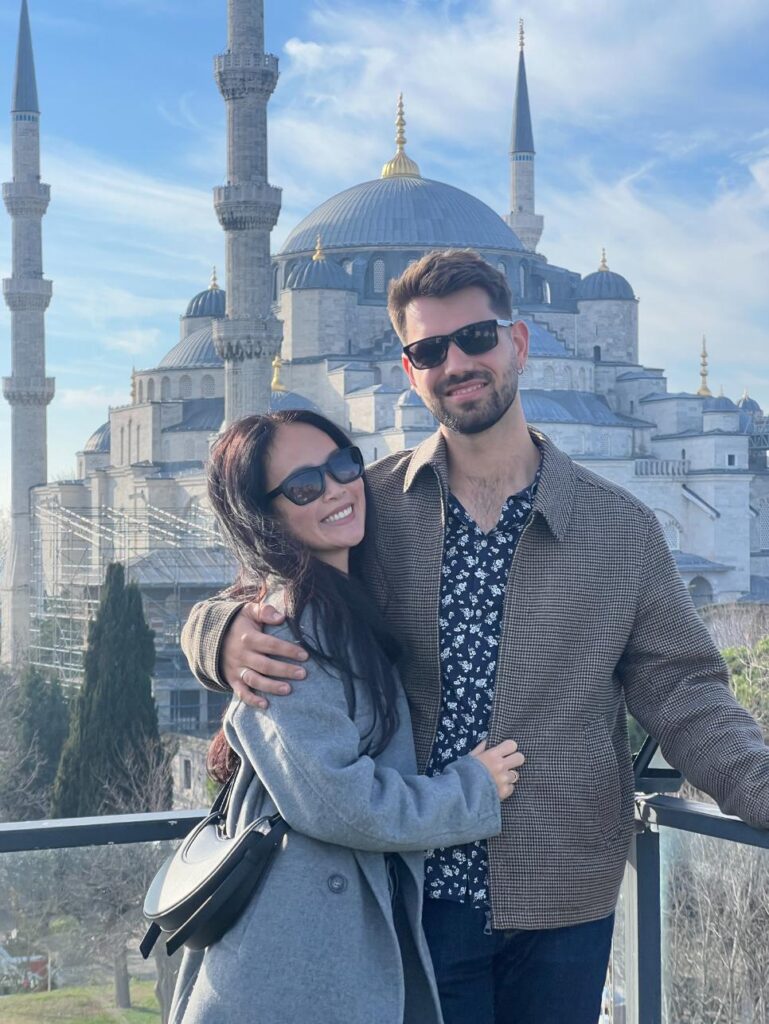
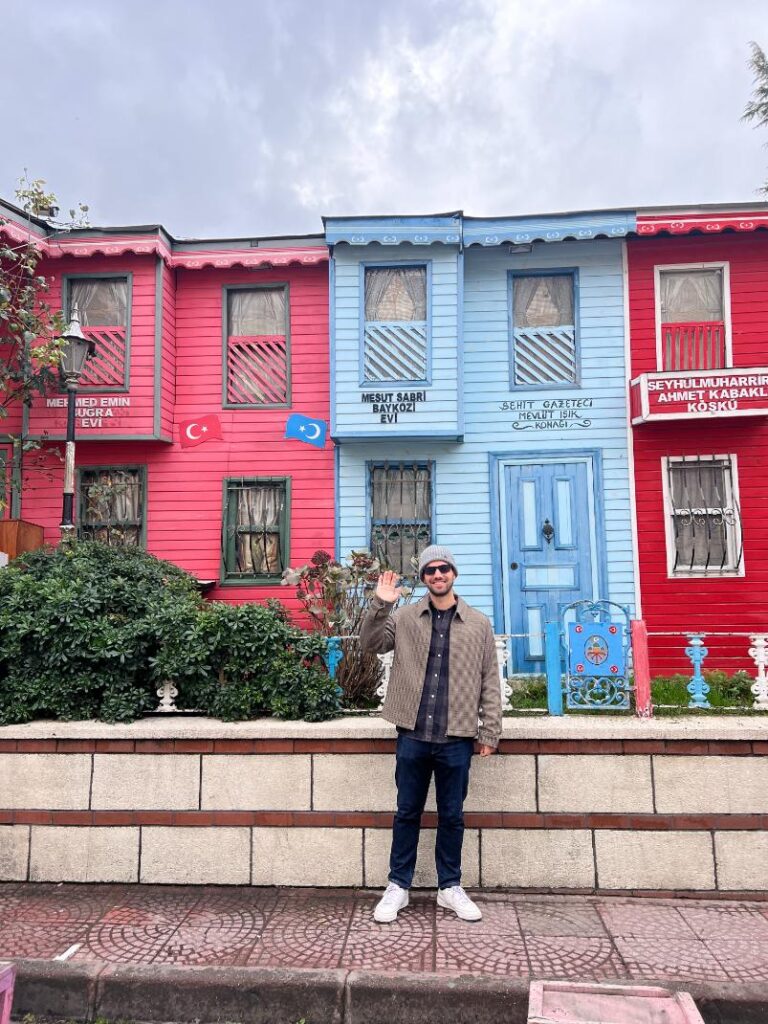
Overall, yes, absolutely. Istanbul is safe for travelers. We’ve lived here, wandered solo through countless neighborhoods, and taken public transport at all hours without issues. But like any big city, it helps to stay alert and aware.
Petty theft (like pickpocketing) can happen, especially in busy areas like Taksim Square, the Grand Bazaar, or crowded trams. So, keep your phone in your front pocket, don’t leave your bag open, and avoid flashing expensive gear. But with that said, petty theft is definitely less common here than in other major European destinations.
Taxi scams, on the other hand, are very much real. We had a few bad run-ins (and we’ve heard some horror stories from friends) before switching to public transport and Uber.
Political protests do pop up from time to time as well, usually in areas like Taksim, but they’re easy to avoid. Just check the news, stay aware of your surroundings, and don’t wander into big crowds you didn’t mean to join. It might also be worth steering clear of the stadium during big match days as the crowd can get pretty rowdy.
For solo female travelers: Istanbul is generally safe, but you might get a few stares or unwanted attention, particularly in less touristy areas. Dressing modestly helps, and so does projecting confidence. We’ve found people here to be warm, helpful, and respectful overall.
What to Pack for a Trip to Istanbul
What you pack for a trip to Istanbul is going to HIGHLY depend on when you go. But here are the basics to get you started.
- Passport
- Phone + phone charger
- Travel adapter
- Travel health insurance – we recommend SafetyWing
- eSIM – we recommend Saily for a budget-friendly option or Holafly (get our 5% discount code NOMADALMANAC) for unlimited data
- Toothbrush, toothpaste, and floss
- Face wash
- Moisturizer
- Deodorant
- Sunscreen
- Lip balm
- Makeup (if needed)
- Period products (if needed)
- Razor/beard trimmer (if needed)
Now, as for clothes, what you need will vary depending on the weather, but here are some must-have items, no matter what time of year you go:
- T-shirts
- Layering pieces
- Pants/jeans/maxi skirts (opt for linen in summer)
- Workout outfit
- Winter jacket (if needed)
- Walking shoes
- Sunglasses
- Hat
- Light scarf
- Underwear
- Socks
Final Tips for Visiting Istanbul
Istanbul is one of the most visited destinations in the world, but if you haven’t explored much of this area of the world, you may face some culture shock that you may not be expecting. To help you jump over these hurdles and come prepared, here are some of our top tips for visiting Istanbul.
- Don’t take taxis: Taxi scams run amok here, with taxi drivers overcharging tourists and even becoming aggressive. So, instead, opt for public transport or Uber.
- Wear good walking shoes: Istanbul is a hilly city, so skip the heels and flat-soled shoes and opt for comfort over style.
- Embrace Turkish tea culture: Turkish tea is absolutely delicious, so if you’re offered one, always say yes! Don’t forget to get some with your food, too.
- Avoid eating (and drinking) near tourist hotspots: The restaurants nearest the tourist hotspots will often sell pretty substandard food and charge jacked-up prices. Avoid at all costs!
- Prepare to haggle: When shopping at bazaars and markets, it’s completely normal for vendors to start off at very high prices, which you’ll then need to haggle down. Have fun with it!
- Never skip breakfast: Turkish breakfast is probably our favorite. Don’t skip it!
- Dress modestly in religious sites: Don’t forget to cover your shoulders and legs. And for women, bring a scarf to cover your hair. While some mosques may provide loaner wraps, you can’t guarantee they’ll have one.
Leaving Istanbul, But Not Really
You could spend 3 days here or 3 months and still not see it all. That’s how expansive and diverse the city is. But with the help of this Istanbul itinerary, you should be able to hit all the highlights you need to see, experience, and eat, so that you can make the most of your time here. Beyond simply seeing the sights and following this 3-day Istanbul itinerary, don’t forget to take a breath. The call to prayer at sunset, the hiss of a simmering tea kettle, the shimmer of the Bosphorus at golden hour… It’s all these little, mundane moments in Istanbul that will make your time here all the more precious and unforgettable.




